October 4, 2013
Air Date: October 4, 2013
FULL SHOW
SEGMENTS
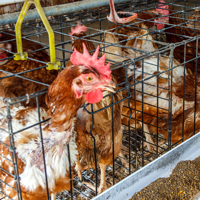
FDA Bans (Most) Arsenic in Chicken Feed
View the page for this story
The Center for Food Safety petitioned the FDA to ban arsenic in feed additives for chicken and turkey four years ago. There was no response, until now. CFS lawyer Paige Tomaselli explains to host Steve Curwood that the FDA has ruled all but one arsenic-containing feed products must be removed from the market. (05:45)
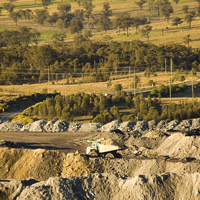
Australia To Repeal Carbon Tax
View the page for this story
Climate desk producer James West tells host Steve Curwood that much of the coal China burns comes from Australia. The new Prime Minister down under intends to repeal Australia's carbon tax, leaving many worried about the country’s contribution to climate change. (07:55)
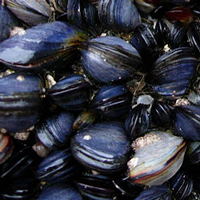
Climate and Algal Blooms
/ Ashley AhearnView the page for this story
It only takes a slight temperature uptick to make our oceans more hospitable to algae. Along with excess fertilizer run-off, that's leading to increasingly toxic algal blooms that can sicken people who eat the affected shellfish. Ashley Ahearn from the public radio collaborative EarthFix reports. (07:30)
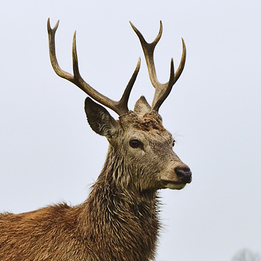
"Mad Cow" Type Prions Found in Plants
View the page for this story
Prions are misshapen infectious proteins that cause a number of fatal diseases including mad cow disease, characterized by holes in the brain. The US deer and elk herd is infected with another prion illness, Chronic Wasting Disease. Ron Seely from the Wisconsin Center for Investigative Journalism tells host Steve Curwood that prions persist in soil and new research shows that plants can absorb them as well. (07:25)
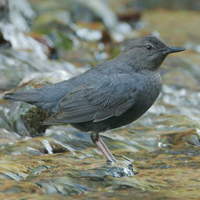
BirdNote®: Why Dippers Dip
/ Michael SteinView the page for this story
The American Dipper is a favorite bird of the west, but exactly why dippers dip is a bit of a mystery. Michael Stein reports. (02:00)
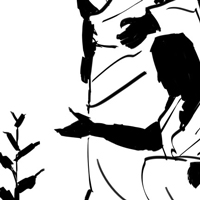
Bridging Faith and Reason
/ Ari DanielView the page for this story
A unique collaboration at Emory University involving Tibetan monks helps bridge the divide between faith and reason. Ari Daniel reports. (05:55)
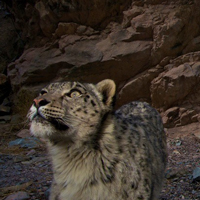
Buddhist Monks Help Save Snow Leopards
View the page for this story
Snow Leopards range widely across Central Asia, and are among the world's most endangered big cats. Tom McCarthy of the conservation group Panthera tells host Steve Curwood that Buddhist monks are employing their reverence for all living things to help save the snow leopard. (09:30)
Show Credits and Funders
Show Transcript
Host: Steve Curwood
Guests: Paige Tomaselli, James West, Ron Seely, Tom McCarthy
Reporters: Ashley Ahearn, Michael Stein, Ari Daniel
[THEME]
From Public Radio International, this is Living on Earth.
[THEME]
CURWOOD: I’m Steve Curwood. Food safety regulators move to make the chicken in every pot and the Thanksgiving turkey a healthier choic, by restricting a poison in America's meat supply.
TOMASELLI: The FDA said that they're going to withdraw arsenic-based feed additives from the market. We feel that the withdrawal of these harmful feed additives is a major victory for consumers and it serves to improve our food system.
CURWOOD: But there's still some way to go. Also, how farm runoff and a warming world can foster toxic algae.
HARRINGTON: The more nutrients you add to a water body, the more algae there is and the more algae you get the more chance there is that some of those algae will be harmful.
TRAINER: As we move into a warmer climate we’re going to have a longer window of opportunity for some of these harmful species.
CURWOOD: Those stories and more this week on Living on Earth. Stick around.
[Boards Of Canada “Zoetrope” from “In A Beautiful Place Out In The Country” (Warp Records 2000)]
ANNOUNCER: Funding for Living on Earth comes from Stonyfield Farm, makers of organic yogurt, smoothies and more.
THEME
FDA Bans (Most) Arsenic in Chicken Feed
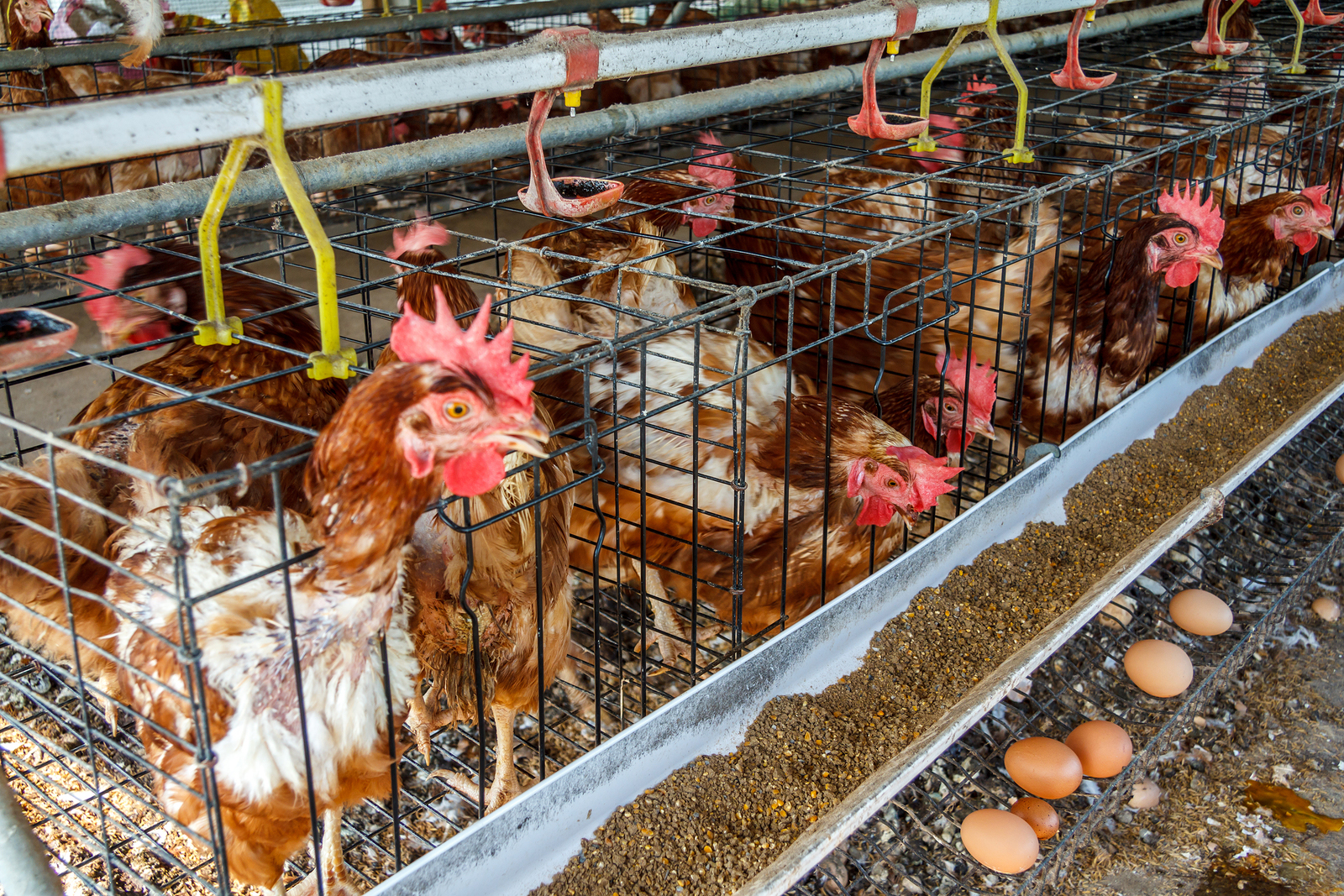
Caged chickens (photo: bigstockphoto.com)
CURWOOD: From the Jennifer and Ted Stanley Studios in Boston this is Living on Earth.
I’m Steve Curwood. We begin our program today with some good news for consumers. Back in May, we reported that a major study found that most supermarket chicken and just about all fast food chicken contained arsenic from a feed supplement to promote faster growth. Paige Tomaselli, an attorney with the Center for Food Safety told us her organization had filed a legal petition back in 2009 to force the Food and Drug Administration to ban arsenic from the food chain with little effect.

TOMASELLI: It's been three-and-a-half years, and the FDA has not responded to the petition, which is why we filed a lawsuit asking them to immediately respond to the petition. Should they deny the petition then we would consider filing an additional lawsuit for their failure to grant this citizen petition.
CURWOOD: Well, now that's all changed, and Paige Tomaselli joins us again to bring us the good news. Paige, what happened?
TOMASELLI: The FDA says they’re going to withdraw arsenic-based feed additives - three out of four arsenic-based feed additives - from the market - so therefore producers of chickens and turkeys and pigs will no longer be able to use these feed additives. We are definitely pleased with FDA’s response. We feel that the withdrawal of these harmful feed additives is a major victory for consumers, and it serves to improve our food system. It’s unfortunate that the legal pressure was necessary to spur action by FDA, but in the end, we’re happy that FDA has listened to our demands and is now working to rid arsenic from the meat supply.
CURWOOD: Now remind us, how does arsenic work its way into the chicken that we eat?
TOMASELLI: Arsenic-based feed additives are fed to animals as part of their diets. These feed additives are made from organic arsenic; however, the organic arsenic converts to inorganic arsenic in the gut of a chicken, and when the animal is slaughtered, the inorganic arsenic, which is a known human carcinogen, remains in the animal and is present in the product that consumers purchase.
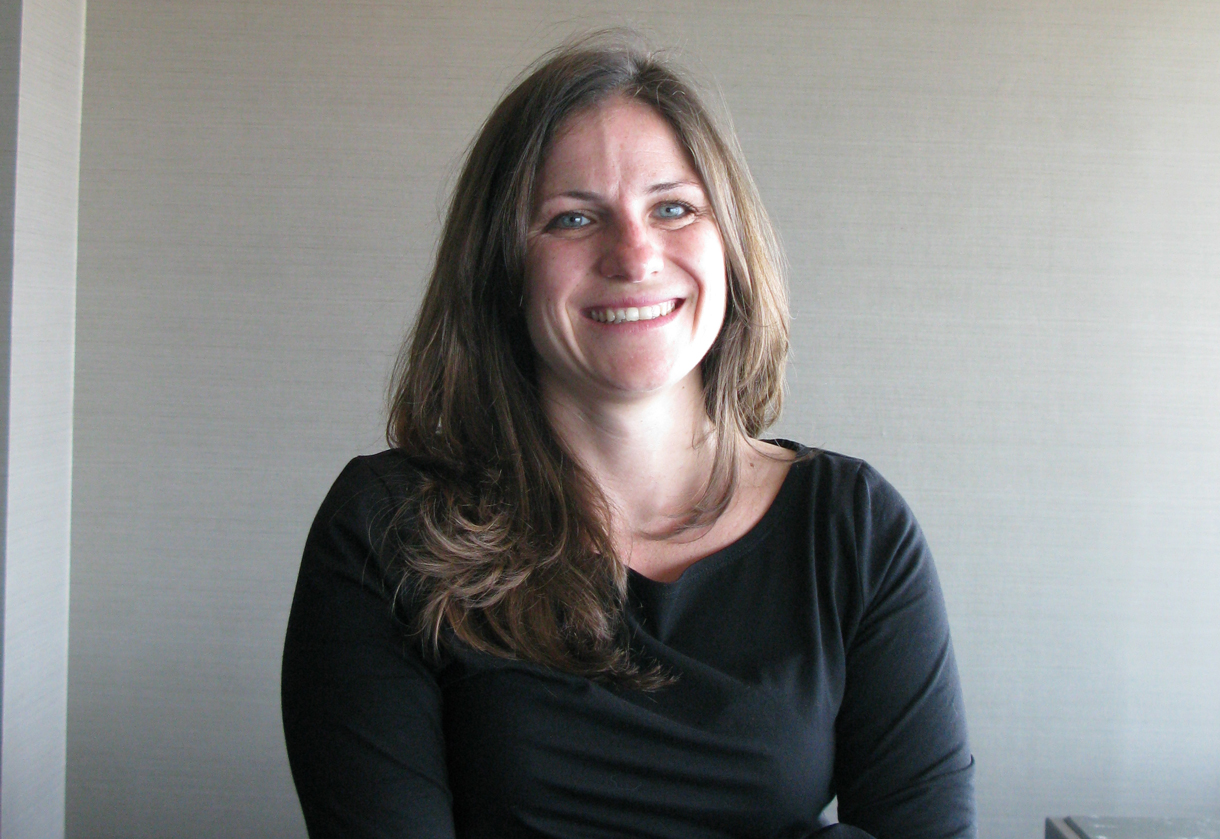
Paige Tomaselli (photo: Paige Tomaselli)
CURWOOD: So if chickens have been fed this, and people eat the chickens, they’re getting arsenic.
TOMASELLI: That’s right.
CURWOOD: Now, a petition, of course, is legalese for the first stage of a lawsuit against the federal government right?
TOMASELLI: That’s correct.
CURWOOD: And so, your lawsuit is now off the table, or...
TOMASELLI: No, the lawsuit is still pending. The FDA and Center for Food Safety made an agreement whereby they would respond to the petition by the first of October, which they have, and now we have 60 days to amend our complaint to challenge their response to the petition.
CURWOOD: So, you’re mostly thrilled, but not completely. Why?
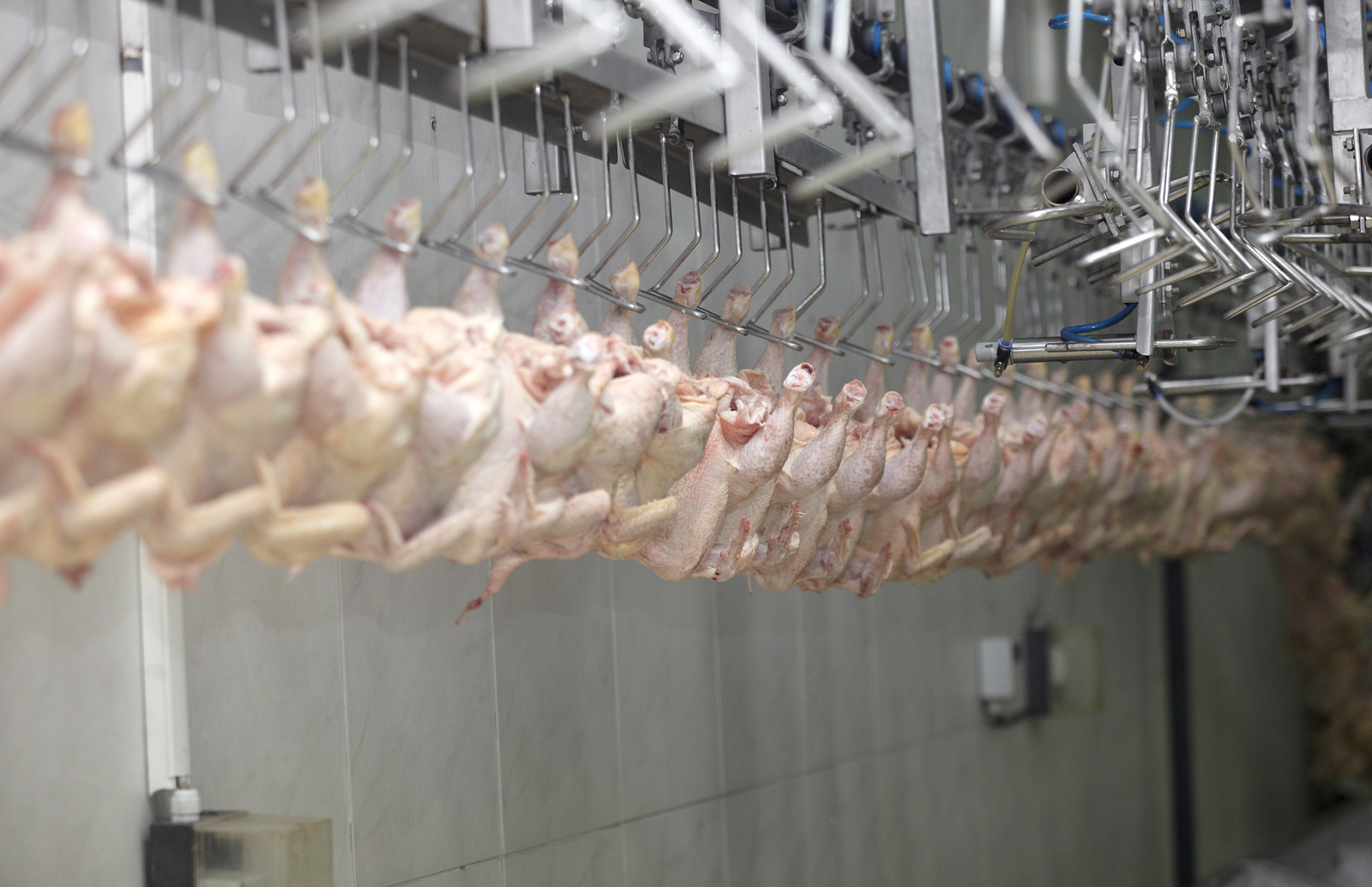
Poultry processing plant (photo: bigstockphoto.com)
TOMASELLI: That’s right. We’re mostly thrilled, but FDA has banned three out of four of the arsenic-based feed additives. There’s one remaining arsenic-based feed additive, Nitrazone, that is still allowed to be used in the feed supply.
CURWOOD: OK. This is radio. You can’t see me scratching my head, but wait a second, if arsenic isn’t safe, then arsenic isn’t safe. Why is one of these being allowed to go forward?
TOMASELLI: It’s unclear to us why FDA is allowing the Nitrazone to be continued to be used in the food supply. Nitrazine is used for weight gain; it increases feed efficiency in turkeys and chickens like the other feed additives, Nitrazine is used by the same manufacturer as one of the feed additives, Roxarzone, which they pulled off the shelf in 2011.
CURWOOD: How did the companies respond to your petition?
TOMASELLI: The companies eventually voluntarily withdrew three out of the four arsenic-based feed additives from the market. After pressure from FDA, studies that came out by FDA and John Hopkins, our petition and consumer demand, but they decided to leave Nitrazone on the market.
CURWOOD: So, in the other words, the FDA has only set by regulation withdrawal of those items the companies said they were willing to withdraw.
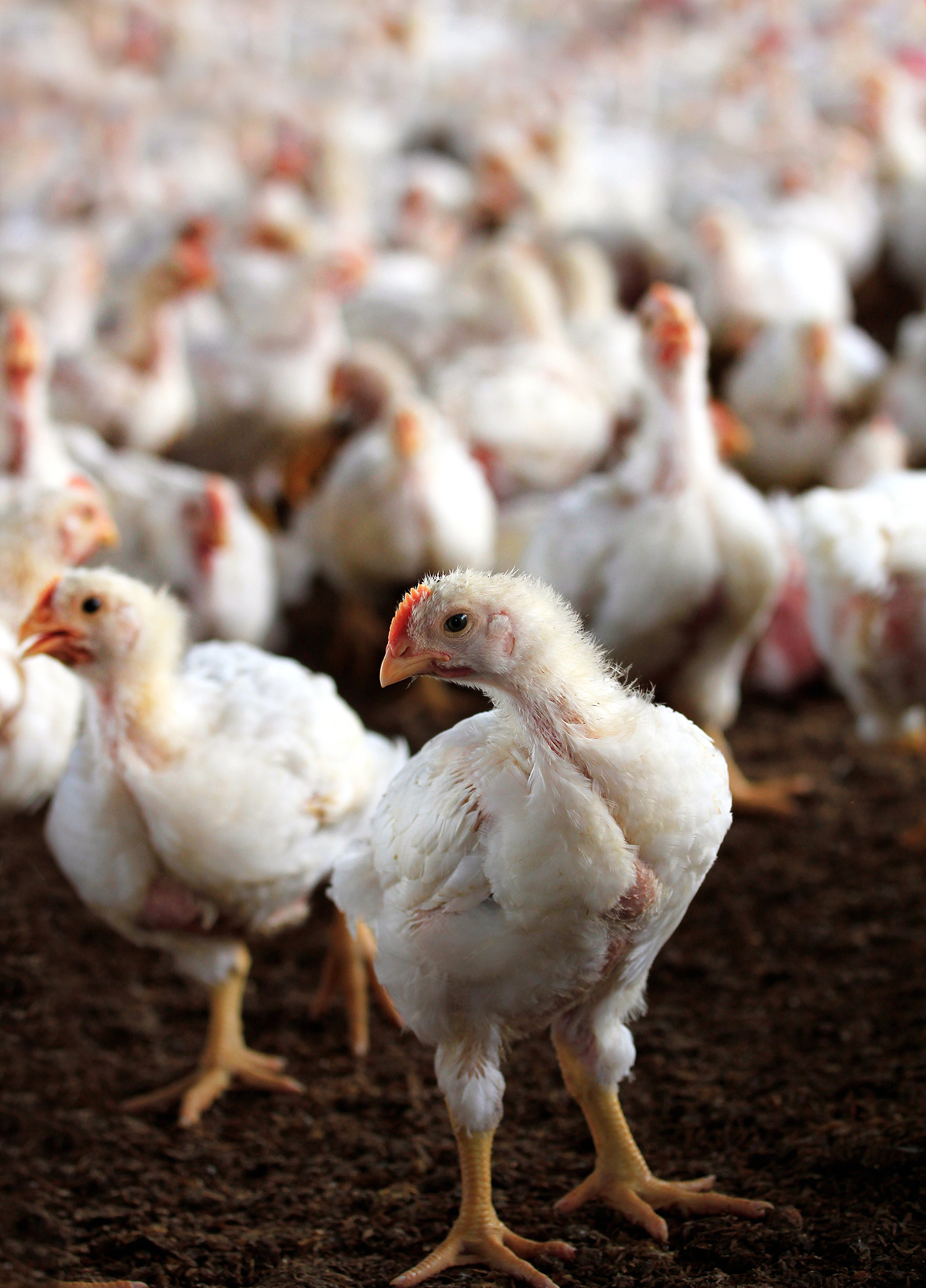
Young chickens on a poultry farm (photo: bigstockphoto.com)
TOMASELLI: That is correct, and so we think FDA is basically taking the low-hanging fruit. They’ve withdrawn the arsenicals that were already voluntarily withdrawn by the companies, but they have refused to make a decision on the remaining arsenic-based feed additive Nitrazone that is still on the market, and is still being used in turkeys and chickens today.
CURWOOD: What’s the time table here? Since we last spoke I’ve been feeling, well, I have to admit, a bit uneasy about eating chicken from various sources, including the food trucks outside our office. When will this, at least partial ban go into effect?
TOMASELLI: Well, hopefully, the partial ban will go into effect soon, and then FDA has stated that it will continue to collect data on Nitrazone, and make a decision on whether or not to withdraw the last arsenic-based feed additive in 2014. Now that this issue has national attention, is in the public eye, we think it’s incumbent upon FDA to either prove the safety of the remaining arsenical drug - something we don’t think they’re going to be able to do - or withdraw the last arsenical drug from the market, so we’re hoping it happens sometime in 2014, if not sooner.
CURWOOD: What role might the government shutdown play in these efforts to withdraw these feed additives.
TOMASELLI: Well, until the government comes back online, and FDA workers are working, they can’t permanently withdraw these feed additives. So while FDA has promised that a ban will be in place, it still needs to follow through once employees are working again, and officially withdraw the animal drug applications for these feed additives.
CURWOOD: Paige, before you go, and I know you’re a lawyer, but do you have any advice for consumers about chicken?
TOMASELLI: Well, the withdrawal of the majority of the arsenic-based feed additives, I think, is a step in the right direction, but until we can eliminate all arsenic from the meat supply, and from our food supply in general, there’s still cause for concern, so I think consumers should still try and purchase organic meat, or meat from producers that they know do not use arsenic or other animal feed additives that are known to cause problems for human beings.
CURWOOD: Paige Tomaselli is a Senior Staff Attorney at the Center for Food Safety in San Francisco. Thanks for coming on the show, Paige.
TOMASELLI: Thank you very much, Steve.
Related links:
- Center for Food Safety Website
- Read more about the FDA’s decision here
[MUSIC: John Scofield “Al Green Song” from Uberjam Deux (Decca/Emarcy Records 2013)]
Australia To Repeal Carbon Tax

Environmentalists worry that the election of conservative Prime Minister Tony Abbott in Australia could be bad news for the Great Barrier Reef (photo: Bigstockphoto.com)
CURWOOD: The human impact on the climate is a global problem, yet the global solution will require many local actions. Consider the Asian Pacific. China is now the world’s biggest emitter of carbon dioxide, thanks to the massive burning of coal, and Australia is a major supplier of that coal.
Both nations are struggling with the political and environmental challenge of climate change in the face of their lucrative trading relationship. James West is a Producer for Climate Desk and himself an Australian, and he joins us now from Chongqing, in China.
WEST: I'm doing a series of stories about the future of energy in China. Of course, with the IPCC report out, so recentl,y we’re all reminded of the fact China is the largest emitter of carbon in the world, and so we’ve decided to come here and really profile what’s next for this giant country that is so voracious when it comes to energy consumption. It’s been really eye opening.

James West (photo: James West, Climate Desk)
CURWOOD: So what are you finding so far?
WEST: Well, we’re finding that this country is still completely addicted to dirty coal. Some 70 percent of its power comes from coal. This train ride that I took recently from Beijing to a central capital called Xian - we went through the coal belt as it’s known here in northeast China, and where one coal plant stopped, another one began. I can’t explain to you how intense it was to see such an amazing level of unabated development through this area, so it’s hard to have confidence that the country can actually get off its addiction to coal but certainly we know that it’s trying - over the last couple of years sunk millions of dollars into solar and wind development that’s far more than the United States in fact. It’s a real problem here, and people are talking about it, and the government, I think, is finally taking it seriously.
CURWOOD: Now one of the biggest suppliers of Chinese coal is Australia.
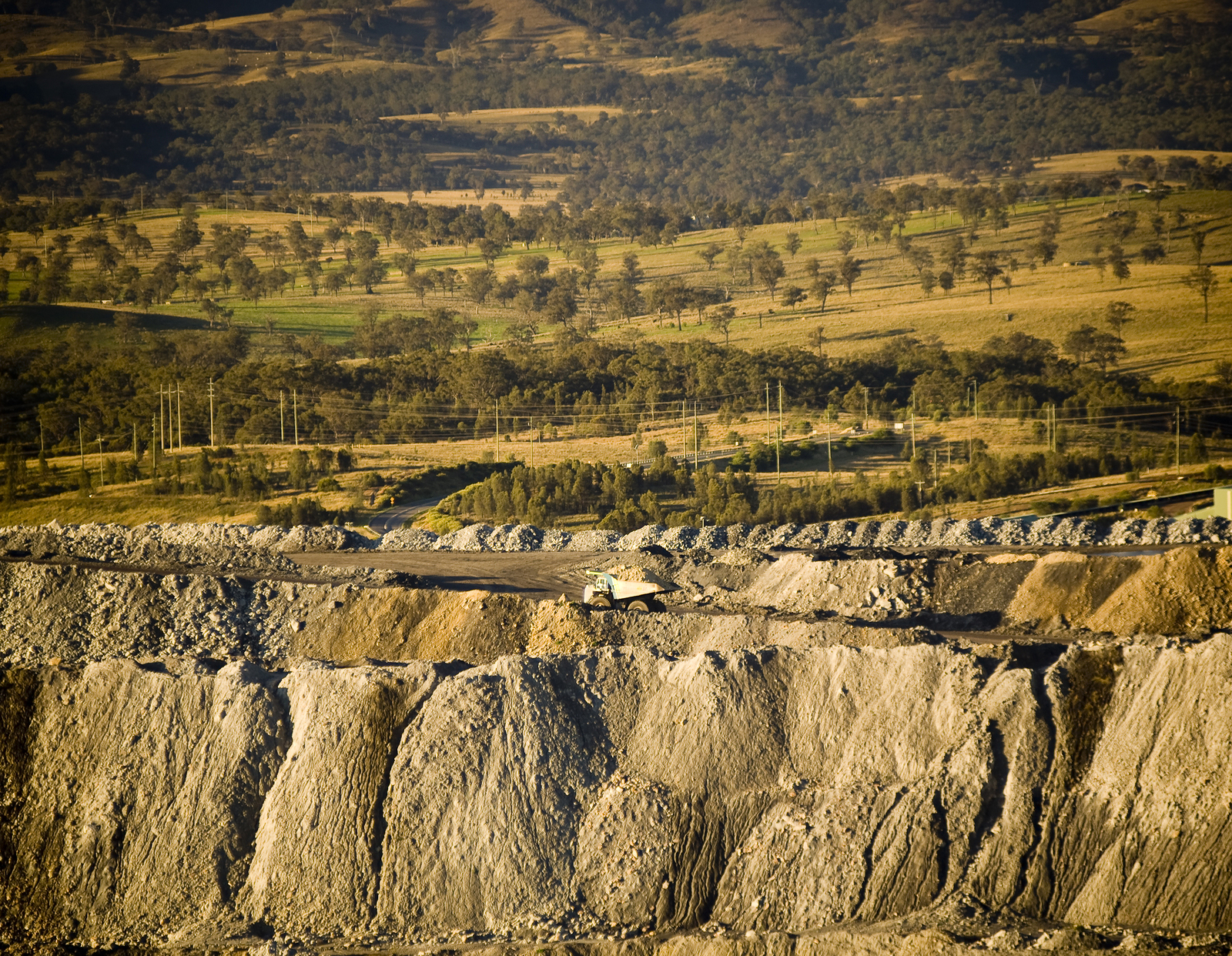
Coal mining in Australia (photo: bigstockphoto.com)
WEST: Indeed. I mean, Australia survived the global financial crisis, in part, because of the huge amount of coal and steel and primary resources that we sell to China. China is a huge customer of Australia, and we were able to be cushioned, unlike many other countries. And so Australia has an enormous vested interest in what happens next in China in terms of energy. In terms of climate change, too, there’s been talk about linking carbon pricing systems with what’s happening in China and emerging stuff in China, so China is definitely on the horizon.
CURWOOD: So I understand there has been a carbon tax in Australia. How long has it been in effect?
WEST: The carbon tax has been in effect in Australia for roughly, what, two years now, and it’s faced nothing but opposition. There’s been huge protests around the country. It’s become a personality test really between Julia Gillard, a former prime minister of Australia who introduced the tax, and a very strident opposition who used, much like the Republicans do in the United States, climate change as a kind of ideological avatar for all sorts of other things about big government and conservative ideology.
CURWOOD: How effective was the carbon tax?
WEST: How effective was the carbon tax is up for debate. However, some preliminary findings said that it was getting to be effective. A lot of independent analysis was coming through that the carbon tax was doing its job. Unfortunately for the government at the time, due to other factors, power prices were going up, which allowed the opposing forces of politicians, to say, well look prices are going up because of the carbon tax. Now, with the election, the opposition leader at the time, Tony Abbott, now our Prime Minister, made what he called a blood oath to repeal this carbon tax, and he won on this case. So he’s now in the process of repealing this carbon tax. But the interesting thing here is, he has the same carbon reduction target as the government, but he’s doing it in a completely different way. A lot of experts that I speak to say that this is going to be really hard for him to reach the same target as the government with what he calls “direct action.” Somebody recently called it “indirect inaction.”

Smog in Chongqing, China (photo: bigstockphoto.com)
CURWOOD: So this is simply setting a limit and imposing no tax, but just simply telling folks that they have to reduce emissions.
WEST: Exactly. It’s a centrally funded policy, which spends a lot of taxpayers’ money on a range of different kind of programs, including burying carbon in soil, improving farm practices, planting trees, but it doesn’t impose the kind of strictures that a cap and trade system does. And so a lot of the environmental economists that work in this area, look at the current government system and, say, well, we’ll wait and see. If this ystem reduces carbon, then so be it. But every model that we’ve looked at doesn’t say that it points in that direction.
CURWOOD: What do you think the climate consequences would be if Abbott does succeed in repealing the carbon tax in Australia?
WEST: Well, look, it’s often said that Australia has more to lose than a lot of other countries when it comes to climate change. We experience many more extremes than a lot of other countries, we have the Great Barrier Reef, we have these amazing natural resources, that are all subject to extreme weather already. You know, we’re looking at the next decade where we’re seeing rising seas, we’re looking at more cyclonic activity, we’re looking at increased drought in a country that already experiences, much like the southwest of America, intense and regular drought.
So climate scientists in Australia warn the worst in the next decade, and you have to remember, Australia per capita is one of the biggest emitters in the world. We have a small population, but we are carbon intensive, we have a very dirty carbon economy. So there’s a lot at risk in Australia, and I think more importantly for the international community it’s important to look at Australia as a kind of canary in a coal mine if you will. Here is a country with a small population that plays politics large on the world stage, and if this happened in Australia, no wonder U.S. politicians are looking and going, “Oh my God. Is that going to happen to me if I speak up about climate change here?”
CURWOOD: With the election of a prime minister who’s commited to repealing the carbon tax in Australia, I’m wondering what other environmental issues will be impacted? Not long ago, we did a story on the development of coal ports along the Great Barrier Reef.
WEST: Right. Exactly. The Great Barrier Reef is one of those totemic environmental issues in Australia that keeps coming up. Various state government and federal governments want to develop that area up in Queensland. If anyone has been there, they know how precious and valuable this part of the world actually is. So that would be number one on my list of environmental concerns. We haven’t heard anything specific from the government, so we don’t really know what’s going to happen to environmental policies. But if we look at climate change as a kind of kernel issue and then multiply out, I have to say I’m not that confident that the environment is high in this particular government’s priorities right now.
CURWOOD: James West is a Producer for Climate Desk and a Reporter for Mother Jones. Thanks for joining us from Chonqing China.
WEST: My pleasure. Anytime.
Related links:
- Read about James’ trip to China and watch a video of his trip through the coal belt
- Check out Climate Desk’s multimedia coverage of climate change news!
[MUSIC: Kneebody “Lowell” from The Line (Concord Music Group)]
CURWOOD: Coming up. Lessons on how to avoid a health risk linked to warming oceans. Keep listening to Living on Earth.
[CUTAWAY MUSIC: John Scofield: “Just Don’t Want To be Lonely” from Uberjam Deux (Decca/Emarcy Records 2013)]
Climate and Algal Blooms
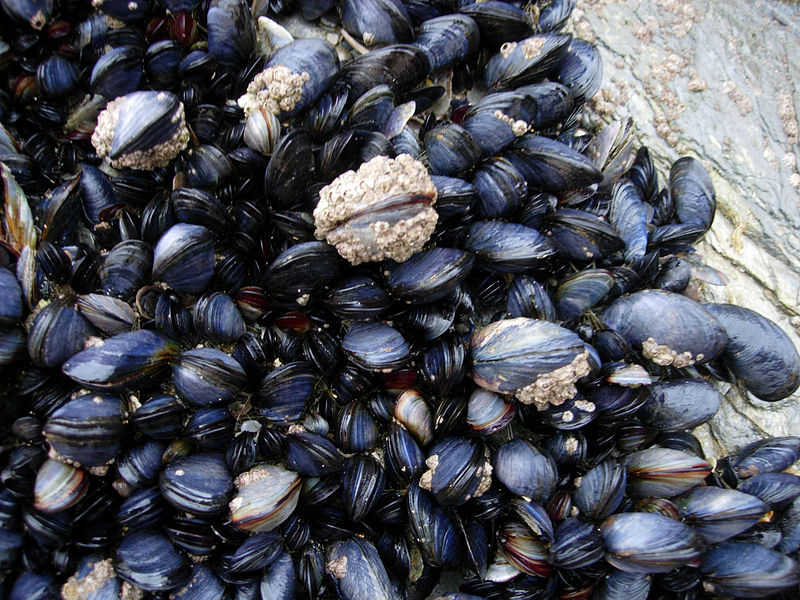
(Wikipedia Creative Commons)
CURWOOD: It’s Living on Earth, I’m Steve Curwood. As the planet’s oceans warm, coastal regions are seeing more and more blooms of algae, often exacerbated by fertilizer and manure that runs off from farms. These algae can be ugly and close down beaches. And they can also release toxins, which then poison shellfish and make people who eat them sick. With toxic algal blooms becoming more potent and lasting longer scientists are taking a closer look at the apparent links to global warming. From the public broadcasting collaborative EarthFix, Ashley Ahearn kicks off a series called “Symptoms of Climate Change.”
[DOOR OPENS]
WILLIFORD: Hi, come on in.
AHEARN: Jacki Williford and her family live in the suburbs east of Seattle. Her seven-year old son Jaycee runs by in a Seahawks jersey teasing his little sister.
JAYCEE: Jesse stepped in poo.
WILLIFORD; Welcome to our world! [LAUGHS]
AHEARN: In the living room, Jacki points to a picture from a camping trip the Willifords took at Sequim Bay State Park, on the Olympic Peninsula, back in 2011. The trip went down in family history.
WILLIFORD: We did not take many pictures. I think we have three from that trip and then that was it.
AHEARN: The Willifords did what many families in the Northwest do on coastal camping trips. They harvested some shellfish and cooked them over their campfire. Jaycee pipes in.
JAYCEE: It was really good. Like the best mussels in the whole wide world. And they were huge.

Eating mussels like theses caused a Washington family to contract the first confirmed case of diarrhetic shellfish poisoning in the United States. (Photo: Katie Campbell)
AHEARN: Then his four-year-old sister Jessica continues the story.
JESSICA: They drinked the poison water.
JACKI AND JOHN: They drinked the poison water? The oysters and the mussels?
JESSICA: They had poison in them.
AHEARN: The mussels the Willifords ate for dinner that night were indeed “poisoned”. But it was a natural type of poison. The shellfish had sucked up a toxin produced by a certain type of algae called dinophysis. Dinophysis has been found around the world, and documented in Northwest waters for decades. But scientists believe it’s becoming more toxic as ocean conditions change, in part due to climate change.
The toxin the algae release causes Diarrhetic Shellfish Poisoning - which is about as much fun as it sounds - and the Willifords were the first documented case in the United States. It wasn’t pretty. Soon after the kids went to bed that night, Jacki and her husband John heard sounds of vomiting coming from the kids’ tent. The next day everyone was still sick, so the Willifords cut their vacation short, packed up their things, and headed home.
WILLIFORD: It just broke your heart the next morning to have a two year old sitting in her stroller with a cup and she would just be over there dry heaving into this cup.
AHEARN: It may be tempting to blame public health officials for this family’s experience but there wasn’t much they could have done. The DSP toxin is expensive to detect - and it had never before been confirmed to have made people in the U.S. sick - though it has in Europe and Japan. The Washington Department of Health works with tribes and shellfish growers to test regularly for other naturally occurring toxins in shellfish - toxins that cause paralysis and amnesia are also produced by algae that are native to this region.
Dinophysis is a relatively new troublemaker. But it may be perfectly equipped to thrive in the changing waters of the Northwest.
HARRINGTON: We are at Sequim bay state park on the western shore of Sequim bay, and we’re about to pull up to the dock actually that the family in 2011 harvested their mussels off of that they got ill from.
AHEARN; Neil Harrington is a biologist with the Jamestown S’Klallam tribe on the Olympic Peninsula. He takes shellfish and water samples here every week. But it wasn’t until the Willifords got sick that he and the Department of Health started aggressively testing for dinophysis and DSP toxin in these waters.
[SPLASHING]
AHEARN: Harrington pulls up a cage full of mussels and oysters and starts picking some out for sampling. Harrington will take these shellfish back to his lab to test for algae-related toxins. Some samples will also be overnighted to the Department of Health lab in Seattle.
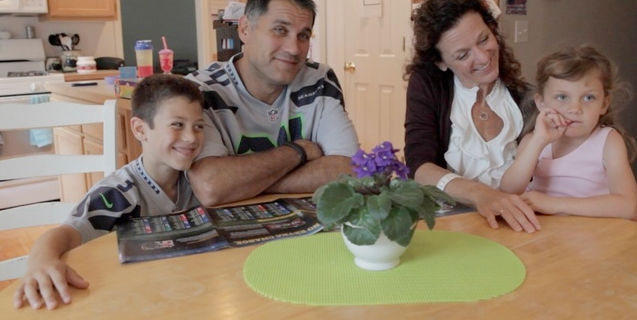
The Williford family is all smiles today. But they weren't so happy when Jessica (far right) was the first person in the U.S. with a documented case of diarrhetic shellfish poisoning. Climate change could make such illnesses more common. (Photo: Katie Campbell)
Harrington is particularly curious about dinophysis. Unlike a lot of algae that just float around and photosynthesize until the water turns phosphorescent or red or green, dinophysis has two tails that allow it to swim through the water. That means it can photosynthesize like a plant and prey on other single-celled organisms.
HARRINGTON: So it’s sort of cellular vampirism. The analog on land would a carnivorous plant.
AHEARN: Little shop of horrors?
HARRINGTN: Very little, kind of microshop of horrors. How’s that?
AHEARN: And this super bug is on the rise in Northwest waters. As more people move to the Northwest and more land is developed, more fertilizers and nutrients runoff into waterways.
HARRINGTON: The more nutrients you add to a water body, the more algae there is and the more algae you get the more chance there is that some of those algae will be harmful.
AHEARN: Now add climate change.
TRAINER: As we move into a warmer climate we’re going to have a longer window of opportunity for some of these harmful species.
AHEARN: Vera Trainer is an expert on harmful algae with the National Oceanic and Atmospheric Administration in Seattle. Trainer says algae thrive when the water gets warmer. They also like it when snow melt flushes fresh water into the marine environment. She says it makes for a nice layering effect, and dinophysis knows how to use those conditions to their advantage.
TRAINER: They can go to the surface into that fresher layer and photosynthesize during the day and then they can swim down and access nutrient rich waters at night. So we believe that there will potentially be an increase in them in the future.
AHEARN: Trainer’s department at NOAA has spent hundreds of thousands of dollars developing equipment that will monitor algae and toxins in the water column in almost real time so public health officials can get the word out earlier.
[LAB SOUNDS]
AHEARN: Public Health officials like Jerry Borchert. He’s the guy responsible for making sure all the shellfish harvested in Washington is safe to eat. That’s a 270 million dollar industry – and 800 miles of coastline to monitor.
BORCHERT: I love what I do. It’s an exciting job. It’s always changing, and never a dull moment.
AHEARN: At the Department of Health lab north of Seattle, Borchert works closely with his team to analyze thousands of shellfish samples every year. If the toxin levels are too high, he closes beaches to shellfishing. This summer marked the first time he had to close beaches in south Puget Sound because of high levels of DSP toxin. Borchert says that in the past decade toxic algal blooms have been on the rise.
BORCHERT: There’s more closures happening repeatedly, they’re starting earlier, they’re lasting longer. They’re happening during the wintertime where they never used to occur.
AHEARN: The Department of Health is spending 80,000 dollars per year, on top of its regular budget, to test for the toxin that causes Diarrhetic Shellfish Poisoning. That’s the one that made the Williford family sick - and it’s making Borchert’s life harder. He’s had to hire more staff, expand sampling sites and sample more throughout the year.
BORCHERT: Things are constantly changing but changing in a more negative fashion so I have to do more to be prepared for this and it’s ongoing.
AHEARN: Borchert’s shoulders slump. He has a resigned, tired look in his eye.
BORCHERT: For every one thing we learn it seems to lead to hundreds of more questions so that’s where we’re at.
AHEARN: This season the Department of Health closed beaches in six counties in Washington because of DSP toxin. Fortunately, no one got sick. But in the years to come, Borchert expects to be even more busy.
I’m Ashley Ahearn in Seattle.
CURWOOD: Ashley reports for the public broadcasting collaborative, EarthFix.To see photos and video from this series "Symptoms of Climate Change", check out our website, LOE.org.
Related link:
Earthfix
[MUSIC: Lee Thompson Ska Orchestra “Napoleon Solo” from The Benevolence Of St Mary Ignatius (Axe Attack Music 2013)]
"Mad Cow" Type Prions Found in Plants
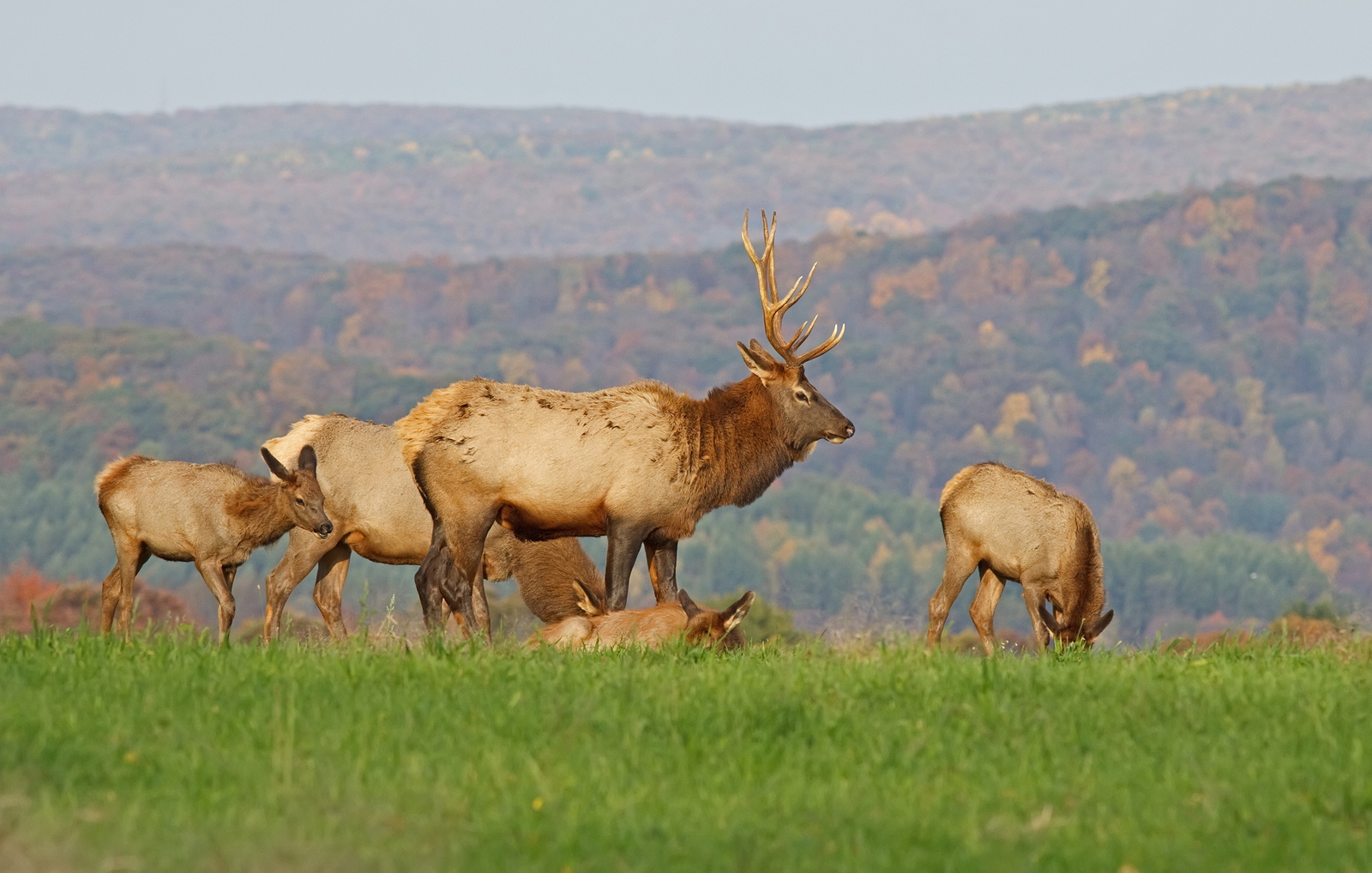
Prions can cause chronic wasting disease in elk. (bigstockphoto.com)
CURWOOD: Bovine Spongiform Encephalopathy. That’s the scientific name for Mad Cow disease, which is caused by infectious proteins or prions that create holes in the brain. This incurable disease very rarely infects humans who eat the tainted beef, but it set off panic nearly two decades ago when it was widespread in British cattle.
In North America, a similar illness to Mad Cow disease, called Chronic Wasting Disease, has been on the rise in moose, elk and deer. And now research by the National Wildlife Health Center in Madison, Wisconsin has found the prions associated with Chronic Wasting can actually be absorbed by plants, and persist in their leaves and stems, posing potential threats to people and animals that eat the plants. Ron Seely is a journalist with the Wisconsin Center for Investigative Journalism, who's been reporting on prions for more than a decade.

In affected regions of the US twenty to thirty percent of the deer population has Chronic Wasting Disease. (Bigstockphoto.com)
SEELY: They're basically misshapen proteins that are capable of infecting neural tissue and brain tissue. The way they work is they transform healthy proteins into misshapen proteins, the disease proteins. There are different kinds of prion disease and the one people are probably most familiar with is Mad Cow disease in cattle. The one we’re talking about here is Chronic Wasting Disease in deer, elk and moose. But these prions will build up and continue this transformation in the brain and basically destroy the brain. The brain becomes filled with these gaps and holes where these prions destroy healthy proteins, and it is a fatal illness, a pretty terrifying illness.
CURWOOD: Where in the US are they finding diseased animals?
SEELY: It’s been found across the country, from western states to Pennsylvania and New York. It’s in...the latest CDC numbers show it in 17 states. The health lab believes it’s in about 20. The biggest concentration is in the western states - Wyoming, Montana, Colorado. So it is a nationwide problem.
CURWOOD: What about people and Chronic Wasting disease...hunters who eat the game that’s infected...what are the odds they will become sick?
SEELY: There is a so-called species barrier that appears to be protecting humans from contracting Chronic Wasting disease. There is human form of the disease called Creutzfeld Jacob that has an incident rate in the country of one per one million in the population. This is a reportable disease across the country, and the CDC requires it be reported. They also keep a database, the number is up to about 800 hunters who actually have eaten tainted, or CWD tainted venison, and so far they have no record of an individual getting sick from CWD tainted meat, and that’s true nationwide. There is no record of anyone getting sick from eating CWD. The importing thing to remember about that is the species barrier that seems to be protecting people in this regard. Scientists say it’s more porous than we once believed. Of course, in England, in the ’80s, we saw Mad Cow disease passed from livestock to humans, although the number of fatalities compared to the number of people exposed is fairly minimal. But other research has shown that CWD prions can be manipulated to become infectious over successive generations to human proteins, so that’s an unsettling finding.
CURWOOD: How does the disease get passed from one animal to another?
SEELY: The prions are shed by the sick animals, and shed at a very high rate via saliva, urine and feces and so forth. Chris Johnson, the CWD researcher at the National Wildlife Health Center found that the prions collect and linger in the soil and actually become more infective in the soil in a process that’s not well understood.
CURWOOD: There’s a new turn in this story, Ron, that seems especially troubling - prions actually being found in plant tissue. Tell me about that, and what’s the mechanism of transmittal from animals to plants, do you think?

(bigstockphoto.com)
SEELY: Yes, that’s the story here. Chris Johnson, the researcher at the National Wildlife Health Lab, having found that these prions exist and linger and last for a long time in soil. The next question for him was, well, can plants growing in that soil take up these prions, and can that plant material affect plants and livestock and deer? So in the lab, he grew plants, and he started with the arabidopsis, which is a real standard research plant in labs everywhere, but he also used barley and alfalfa and maize or corn and even tomatoes. And he grew these plants in a median that was infected with CWD like prions. Through florescent tagging they found the prions in plant tissue and plant leaves, and further, Chris took these tissues that were infected from these various plants, and injected them - material from those tissues – into laboratory mice.

Prions create holes in brain tissue. (bigstockphoto.com)
CURWOOD: And did they become sick?
SEELY: Well, no they didn’t become sick, and that because of the species barrier, still appears to be working, but they took up the prions, and the prions were evident in the neural tissues and other tissues, too, but, neural tissues and brain tissues.
CURWOOD: Why not just feed the plants to live animals?
SEELY: They’re doing that right now. Actually, in science like this, there is a stepped process they follow, and generally protocol calls for first to inject the material and then move to oral bio-assays whether they take it up orally. Those results should be available in a period of months.
CURWOOD: What would you advise our listeners who hear this interview to come away wondering if any of their food is safe?
SEELY: Well, the CDC for sure recommends that no one eat any deer - venison - before it’s tested. But I think the verdict is probably still out on exactly how serious a problem these prions showing up in plants may be. I think it’s unsettling, and especially when it comes to CWD prions and venison that there needs to be a good amount of caution exercised, and we’ll have to wait and see on the plant study.
CURWOOD: Before you go, Ron, how much venison are you eating these days?

A computer generated of a misshapen protein, prion. (bigstockphoto.com)
SEELY: I don’t eat a lot of venison. If I have a friend who’s a hunter, and I get invited over for dinner and they serve me venison, I certainly don’t turn it down. I do ask if it has been tested. I think initially we saw a decrease in the number of hunters. When it first came out, the news of it came out, I got calls from housewives in rural areas saying, look, my freezer’s full of venison, and should I be feeding this to my kids? And you know, unfortunately, prion science is still, as I’ve said, there’s still a lot of uncertainty so it was hard to know what to tell these folks other than to say, look don’t eat meat that’s not been tested.
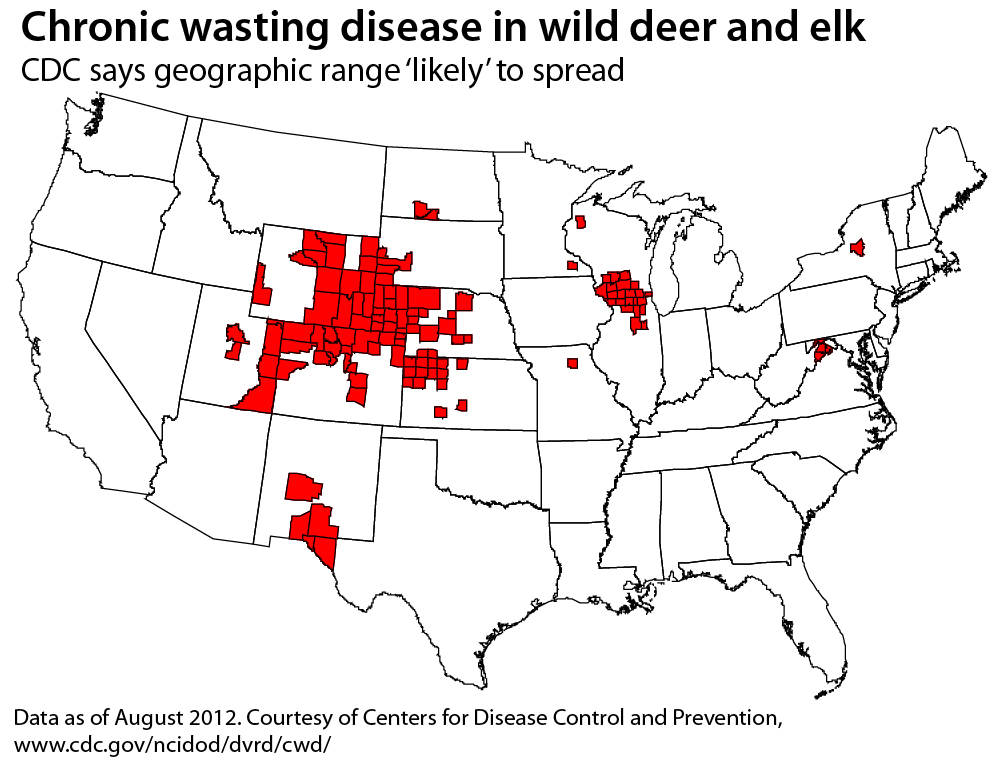
Incidents of chronic wasting disease are shown in red. (Center for Disease Control)
CURWOOD: Ron Seely is a journalist with the Wisconsin Center for Investigative Journalism. Thanks so much, Ron.
SEELY: It was a pleasure.
Related link:
Wisconsin Center for Investigative Journalism
MUX - BIRDNOTE® THEME
BirdNote®: Why Dippers Dip
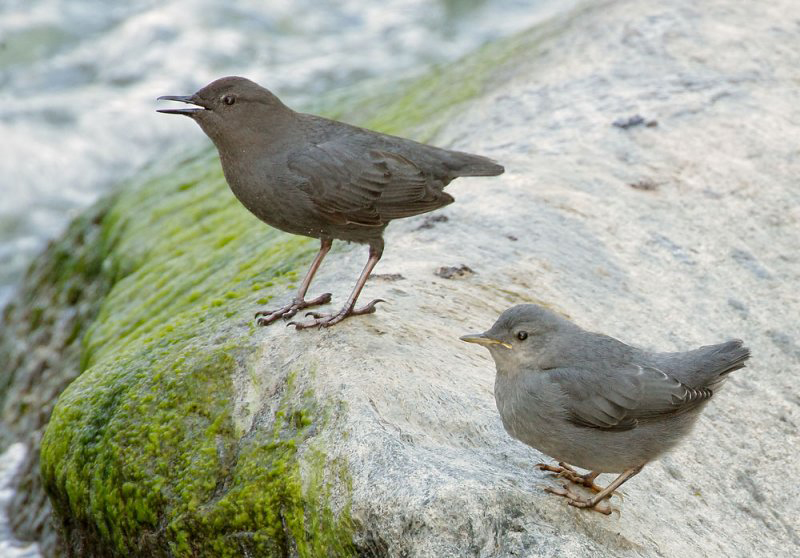
American Dipper adult and fledgling. (© Tom Grey)
CURWOOD: We have a much more soothing kind of story now - the mystery of exactly why a familiar bird of the American west does what it does. Michael Stein has our BirdNote®.
[WATER RUSHING, SOUND OF CHIRPING]
STEIN: An American Dipper calls across a rushing mountain stream. Its rotund, stone-gray body bobs rhythmically up and down, its feet firmly planted. The bird’s white-feathered eyelids flash like a semaphore.
[CHIRPING AMERICAN DIPPER]

American Dipper swimming with food. (© Tome Grey)
So why do dippers dip? Let’s consider three theories: One suggests the dipper’s repetitive bobbing against a background of turbulent water helps conceal the bird’s image from predators. A second asserts that dipping helps it sight prey beneath the surface of the water. A third theory holds the most promise. Dipping, as well as the rhythmic flicking of those flashy white eyelids, may be a mode of visual communication among American Dippers in their very noisy environment. That dippers make exaggerated dipping movements during courtship and also to threaten aggressors lends support to this theory.
[WATER RUSHING IN MOUNTAIN STREAM]
So if one day, as you muse alongside a mountain stream and an American Dipper bobs and winks in your direction, don’t take it personally. It’s probably beckoning to another dipper upstream.
I'm Michael Stein.
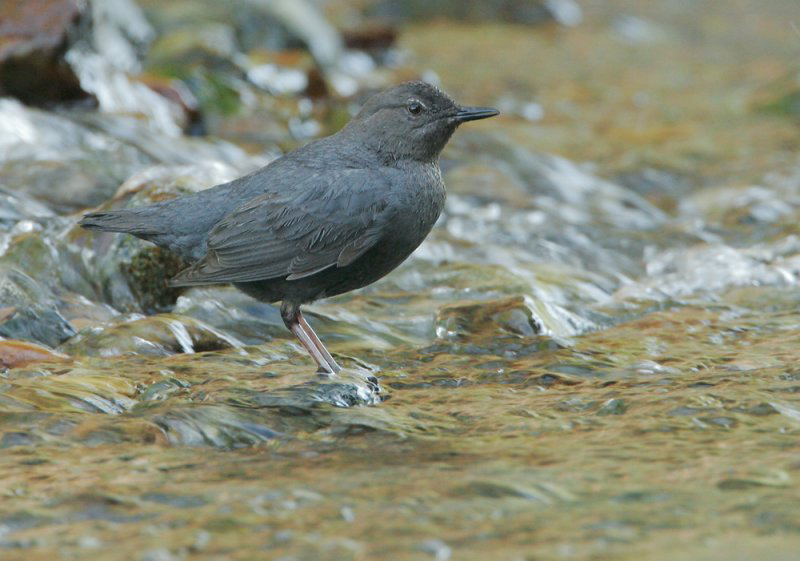
American Dipper (© Tom Grey)
CURWOOD: There are photos of dipping dippers at our website, LOE.org.
[birdnote.org/show/why-dippers-dip
Written by Bob Sundstrom
Song of the American Dipper and Riparian Zone Nature SFXs #119 and # 17 recorded by Gordon Hempton of QuietPlanet.com
Some stream ambient recorded by C. Peterson
Producer: John Kessler
Executive Producer: Chris Peterson
© 2013 Tune In to Nature.org September 2013 Narrator: Michael Stein]
Related link:
BirdNote ®
[MUSIC: King Curtis “Big Dipper” from Soul Serenade (Startek Records 2007)]
CURWOOD: Coming up...Buddhist monks take on a new challenge - conserving endangered snow leopards.
MCCARTHY: Buddhists have such a high reverence for life that if those Buddhist monks in snow leaopard habitat could be assisted just a little bit in the role that they already played in protecting nature in general, it would probably be a very positive situation.
CURWOOD: That’s just ahead here on Living on Earth. Stay tuned.
ANNOUNCER: Funding for Living on Earth comes from the Grantham Foundation for the protection of the environment. Supporting strategic communications and collaboration in solving the world’s most pressing environmental problems, the Gordon and Betty Moore Foundation, the Kendeda Fund, furthering the values that contribute to a healthy planet, and Gilman Ordway for coverage of conservation and environmental change. This is PRI, Public Radio International.
[CUTAWAY MUSIC: Donald Harrison: “New Hope” from Nouveau Swing (Impulse Records 1995)]
Bridging Faith and Reason
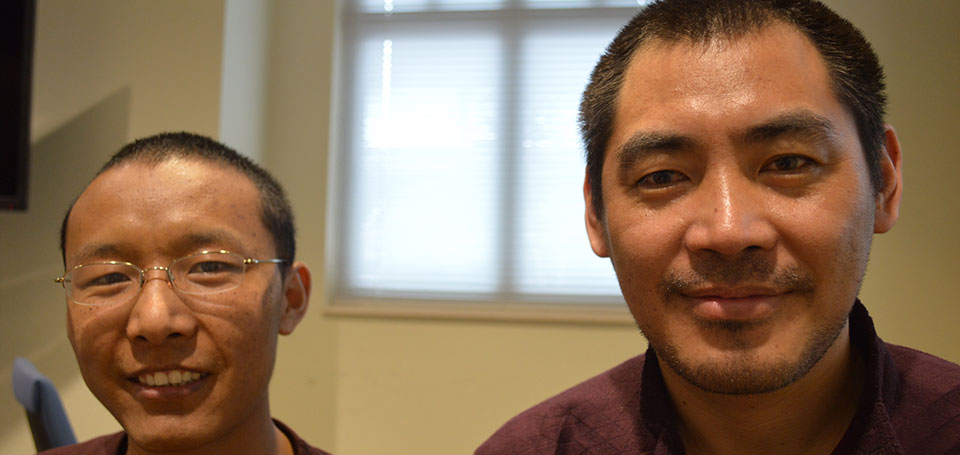
Thabkhe Thabkhe (left) and Ldoe Sangpo (right) are both Tibetan monks from Dharmsala and avid students of science and math at Emory University. (Photo: Ari Daniel)
CURWOOD: It's Living on Earth, I'm Steve Curwood. Many scientists find the bedrock faith of religion troubling. After all, the fundamental basis of science is questioning, and testing hypotheses and theories. And yet, there are some deeply religious and spiritual people for whom there is no split between the questions and doubts of science and their strong beliefs. Ari Daniel had the experience of sharing the search for meaning and truth in science with some unusual young students. His story is part of a series called “Small Matters”, where he sweats the small stuff. In this case, looking at how some build a bridge between faith and reason.
[ZIPPING OF BACKPACK]
DANIEL: I’m sitting with two exchange students who have come here, to Emory University, for a study abroad program. Their names are Lodoe Sangpo and Thabkhe Thabkhe.
LODOE: These are notes from my social psychology class.
ARI ON TAPE: You’ve got a calculus book here?
THABKHE: Right. Right now it’s derivatives...
DANIEL: Psychology, calculus, microbiology. It all seems pretty ordinary for college. Until I tell you what Lodoe and Thabkhe are wearing – floor-length maroon robes. They’re Tibetan monks.
Unlike the tensions that are all too common between science and the Judeo-Christian religions, science and Buddhism enjoy a much friendlier relationship.
DALAI LAMA: I develop genuine respect about the science and scientists.
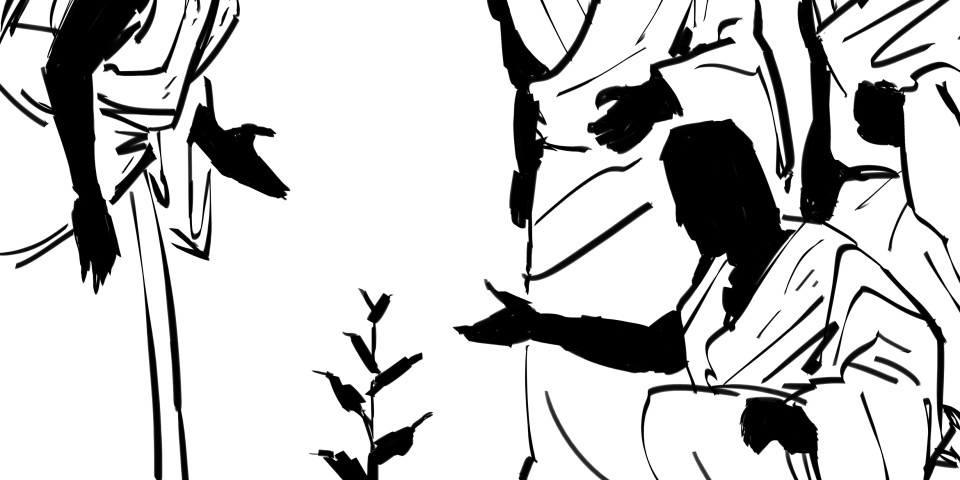
(Small Matters)
DANIEL: That’s His Holiness the Dalai Lama speaking before an American audience.
DALAI LAMA: Skepticism very necessary – skeptical attitude brings question. Question brings research. Research brings answer. No research, you can’t find the reality.
DANIEL: The Dalai Lama’s appreciation of uncertainty, inquiry, and science has become increasingly important to him and Tibetan Buddhism over the last few decades. And back in 2007, he supported the creation of a rather innovative program on the shoulders of an existing partnership between Emory and the Tibetan community. The idea was for Emory scientists to write an entire science curriculum for a group of Tibetan monks and nuns, and then teach it to them. Arri Eisen was one of the scientists. He’s a biologist who specializes in teaching science, but this was a whole new ballgame.
EISEN: All teaching is a kind of translation, but this is extreme translation that we were doing, crossing so many different borders and barriers.
DANIEL: After spending months honing the curriculum, Eisen traveled to Dharamsala to teach the monks and nuns. He says many of them had never even thought about science, and had never done math before. It was foreign territory for everyone.
EISEN: The first thing we decided to teach was evolution.
DANIEL: Eisen’s all about hands-on learning, so he sent his class of monks and nuns outside to collect plant and animal samples.
EISEN: The monks just went wild up there, having the time of their lives. And then they brought all their collections back, and analyzed their data and showed that, you know, that Darwin was right.
DANIEL: That is, that organisms evolve, adapting to different environments.
EISEN: Not bad for a bunch of monks and nuns.
LODOE: Arri Eisen – he’s one of the professor who all the monk students really admired.
DANIEL: That’s Lodoe Sangpo again. Before coming to Emory in Georgia, he was a student in Eisen’s class in India. He says that his monastery education had consisted primarily of memorization. So he found Eisen’s approach to teaching refreshing.
LODOE: Not just giving a lecture, but also let the students be a more creative and to think and come up with their own idea when you encounter other problems. We learn how to learn.
DANIEL: In the classroom, Eisen also took advantage of something special in the monks’ training. Debate.
EISEN: It’s a kind of combination wrestling match, comedy show, intellectual exercise. So they’re so used to it, you just basically give them a topic and they go to it. And they start yelling at each other, and tackling each other. And they [SMACK HANDS] do that to emphasize their points at the end.
DANIEL: Eisen asked the monks to debate a variety of topics – like whether bacteria are sentient – that is, conscious organisms. It’s an important issue for Buddhists since they believe they can be reincarnated only as sentient beings.
Eisen even engaged the monks and nuns in discussions concerning the origins of life.
EISEN: Getting from non-??living to living, or how do you get from no cells to a cell, that was harder for the monks. It’s still hard for the monks, it’s still hard for us.
DANIEL: Scientists just don’t know how the brew of molecules on the early Earth transformed itself into the first semblance of life. Did a self-replicating molecule form randomly? Was there a flash of electricity that jumpstarted a crucial chemical reaction? Or something else altogether?
The monks have their own creation story naturally, but the thing about Buddhism – the thing that makes it a lot like science, actually – is that if better evidence comes along,
Buddhists will change what they believe. Evidence that, say, rejects their creation story in favor of something else, like a transition from a static chemical broth to something alive. Thabkhe Thabkhe and Lodoe Sangpo.
THABKHE: Buddha himself told: you should follow me through the reason rather than belief. LODOE: So, if there’s no reason and there’s no proof, then we don’t have to believe it. You just discard it.
DANIEL: As for this partnership between Emory and Tibetan Buddhism, though, there’s a lot more to keep than discard. Arri Eisen returns to India every year, and he says the project’s made him a better teacher, and a better person. And the monks say learning science has deepened their Buddhism. It’s a profound example of how faith and reason can complement one another – two friends in search of answers to the same set of questions. For Living on Earth, I’m Ari Daniel.
CURWOOD: Our series, Small Matters, is produced by the Center for Chemical Evolution, with support from the National Science Foundation, and NASA.
Related link:
Small Matters
[MUSIC: Bill Nelson “Buddah Head” from The Practice Of Everyday Life (Esoteric Records 2012)]
Buddhist Monks Help Save Snow Leopards

Snow Leopard (photo: Steve Winter/National Geographic)
CURWOOD: Well, as Ari Daniel argues, faith and reason can be complementary - and perhaps together they can achieve successes impossible to either of them separately. One example of that may be playing out at the moment at the top of the world - in the high mountains of Central Asia. That's the habitat of the snow leopard, one of the world's most endangered big cats. But there might be hope for them in a new partnership between the conservation group Panthera, and the Chinese environmental organization Shan Shui.
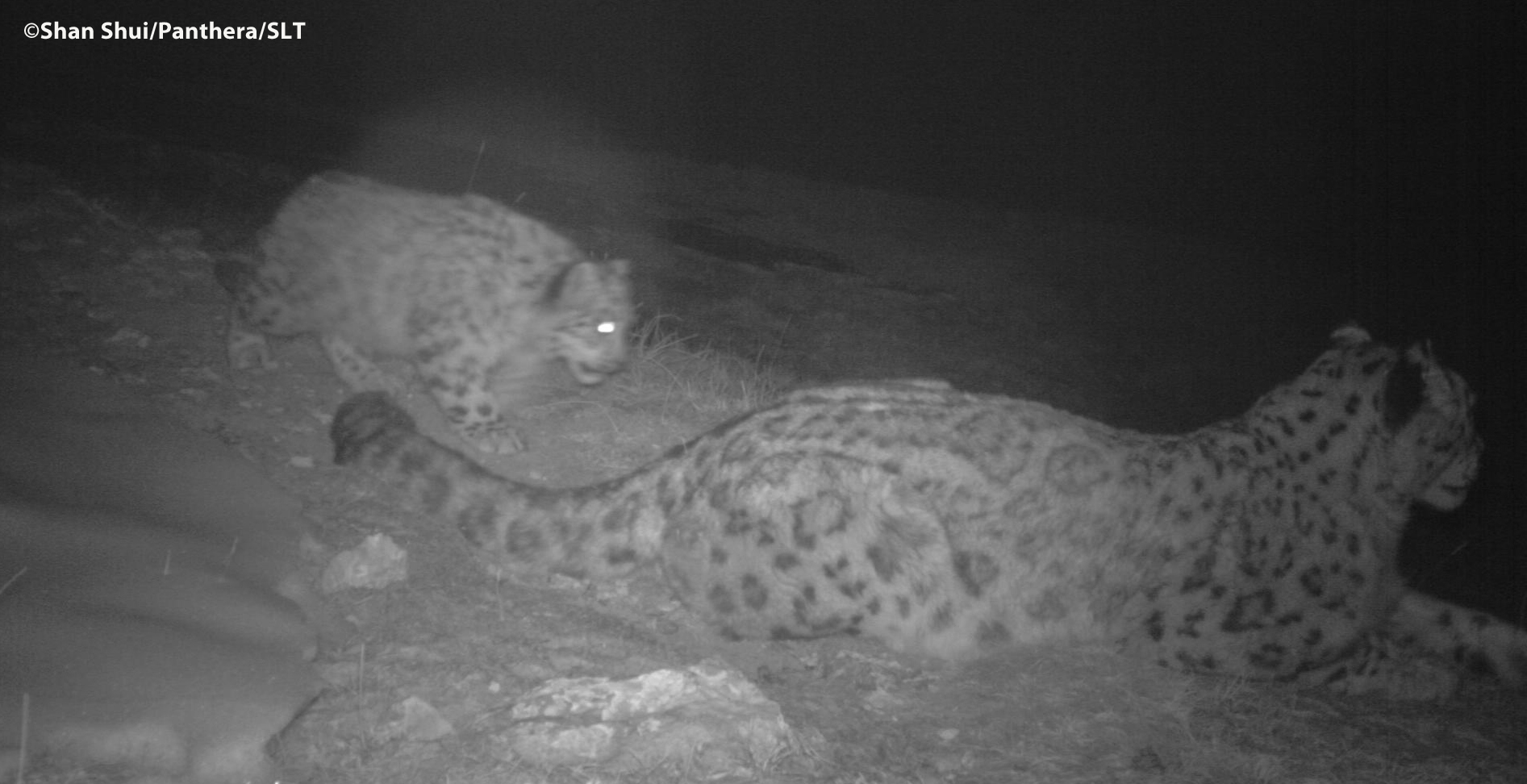
Snow leopards at night (photo: Panthera)
Shan Shui means "mountain water" and the groups are turning their eyes to the mountains for conservation help from Buddhist monks. Tom McCarthy is the Executive Director of Panthera and he joins us now from Seattle to explain how the monks are helping and why the leopards are so threatened.
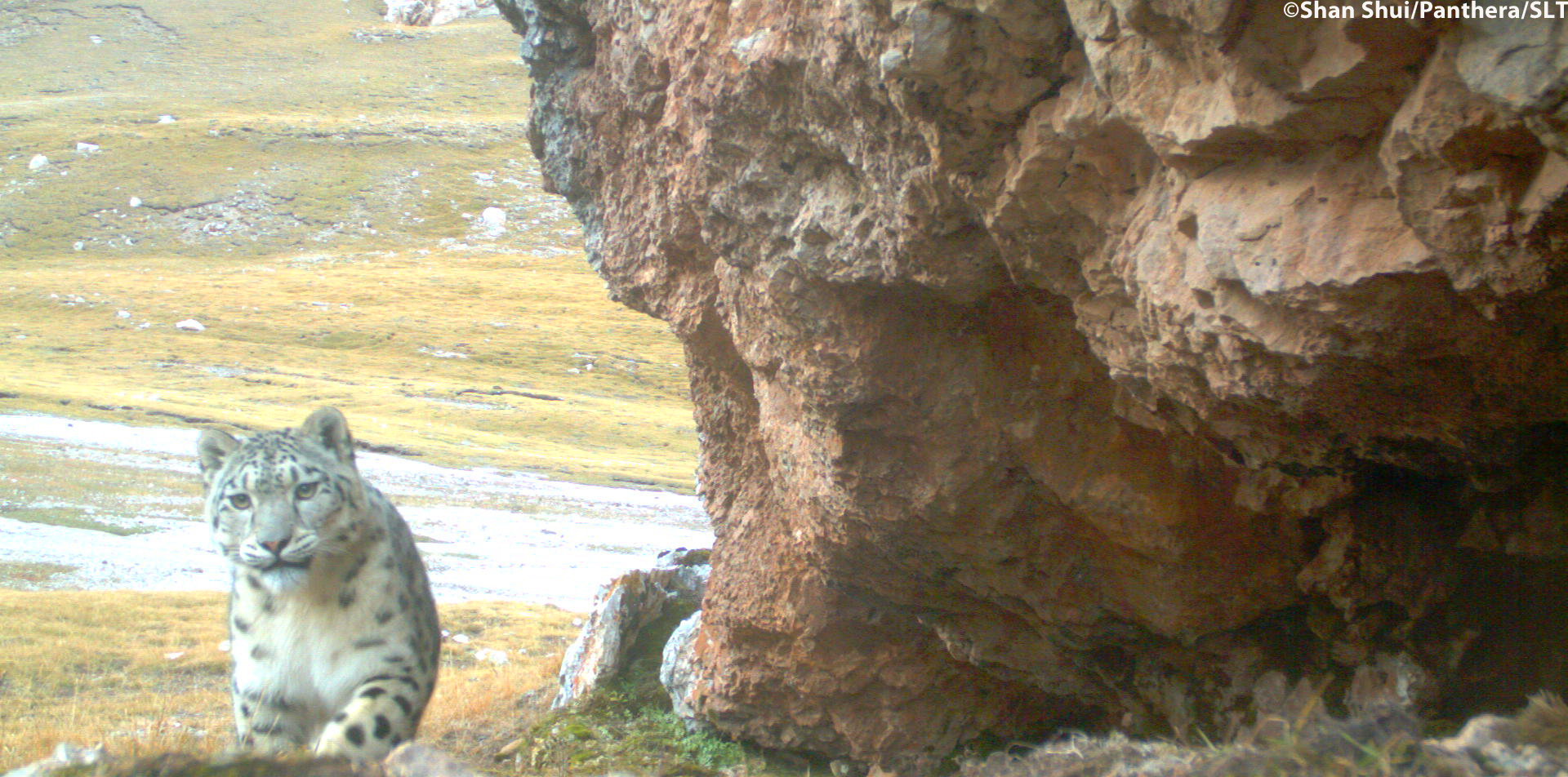
Camera trap photo of a snow leopard on the Tibetan plateau (photo: Panthera)
MCCARTHY: Globally the snow leopard range extends over a very large swath of central Asia, about two million square kilometers. Across that entire area, there could be as few as 3,500 snow leopards remaining today, optimistically we might say it’s as high as 7,000 remaining. They are considered endangered all across the range, and they’re on the red list of every country in which they occur ,which is 12, and they’re protected by several international treaties as well.
CURWOOD: What are the major threats?
MCCARTHY: There’s several really. One of the most serious ones is retribution killing for loss of livestock. Snow leopards are predators, and they are not immune from coming down and taking herders’ livestock whether it’s sheep, goats, yaks, and most of the people that live in snow leopard range they’re very poor, semi-nomadic or nomadic herders whose entire life is pretty much tied up with their livestock. So when a snow leopard or any other predator takes one, it has a pretty large economic impact on them, so they’re somewhat inclined to go out and kill the snow leopard.
So that’s one of the biggest concerns that we have. Another one is loss of natural prey. They normally eat wild sheep and goats in the mountains, and when populations of those decline for whatever reasons, whether they’re poached, or whether there’s competition with livestock, and their numbers go down, then snow leopards of course turn to livestock, so you kind of have a vicious circle going there. And, of course, snow leopard hides, pelts and their bones are very very valuable on the black markets across the region. Their bones are highly valued in traditional Asian medicine so a lot of them, so a lot of them are killed simply for economic reasons.
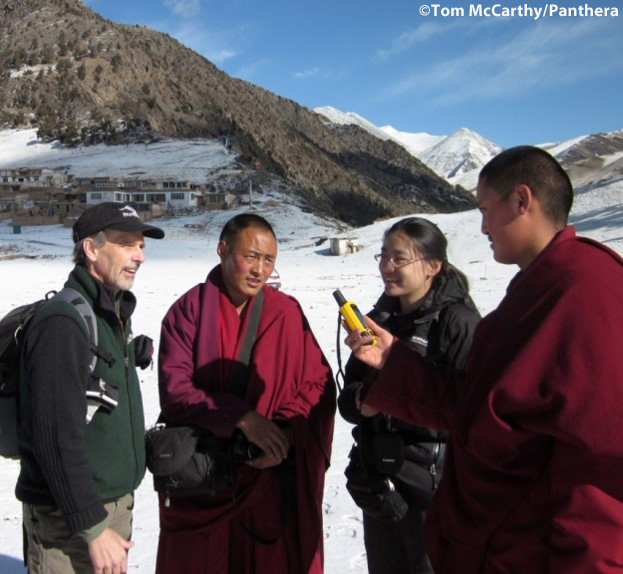
Dr. Tom McCarthy and Yin Hang (Shan Shui) discuss snow leopard monitoring methods using GPS and other technology with Buddhist monks. (photo: Panthera)
CURWOOD: How much is the pelt of a snow leopard worth?
MCCARTHY: Well, it depends on which part of the market chain you’re on. A local herder might get $50 to $100, maybe $200 for it. On the other end, when it hits Eastern European fur markets, you know, it could be in the thousands. But that’s nothing compared to what a single set of snow leopard bones is worth on the medicinal markets, which a single snow leopard could bring up to $10,000 just for its bones.
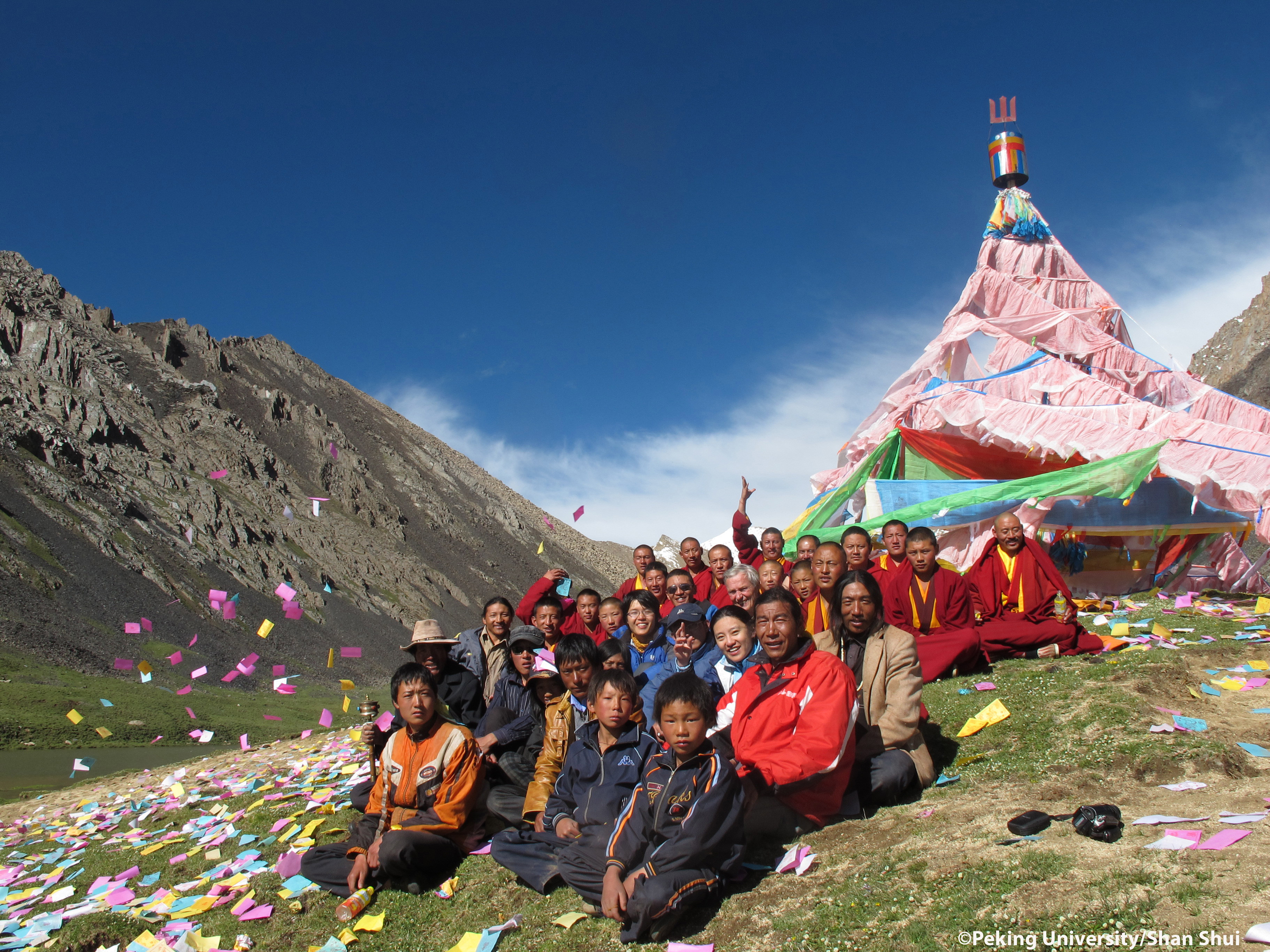
Yin Hang, Zhala Jiagong, author Li Juan and Panthera VP, Dr. George Schaller, join monks to worship at their sacred mountain and holy lakes near Xiari Monastery in Qumalai County, Qinghai Province. (photo: Panthera)
CURWOOD: So, Tom, your organization, Panthera, has enlisted the services of Buddhist monks to help conserve the snow leopard. Can you describe this program for us please?
MCCARTHY: Yes. Correct. It actually came from a PhD research project of a Chinese graduate student, and she was first out trying to document the occurrence of snow leopards across a very large portion of the Tibetan plateau in Qinghai province, and one of the things in mapping their occurrence that she happened to notice was that snow leopard range corresponded very closely to where most Buddhist monasteries were in the region.
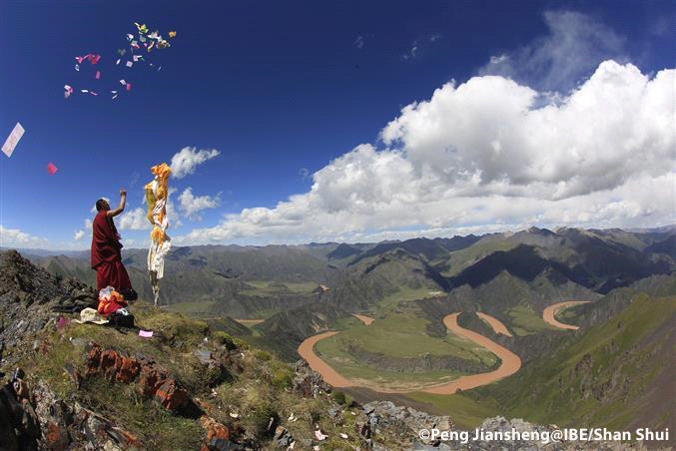
The upper Yangtze curve beside a sacred mountain of Xiari Monastey (photo: Panthera)
Around each of the Buddhist monasteries, there’s a number of sacred mountains, sacred lakes that they routinely patrol to keep people from violating any of their regulations or for killing any animals. And so she kind of put two and two together and already knowing that Buddhists have such a high reverence for life, that if those Buddhist monks in snow leopards habitat could be assisted just a little bit in the role that they already played in protecting nature in general, that it would probably be a very positive situation.
So our partners at ShanShui, the conservation organization, went out and formed a partnership initially with four different monasteries, and what Panthera and Shan Shui do is provide the monasteries with a little bit of extra training, some of the basic tools that they need to do snow leopard monitoring, so now they can go out and not only protect snow leopards, but also count snow leopards. They do an awfully good job of talking to their followers about protecting snow leopards and the value of snow leopards in the ecosystem, and the end result is we have a much stronger conservation ethic being imparted to the people across the plateau through the Tibetan monks.
CURWOOD: What’s it like to be out on patrol with these monks?
MCCARTHY: Oh, it’s great to see people that already have such a wonderful love for all nature. A lot of these folks spend a great deal of time out there. They’re very inquisitive, they’re very knowledgable, they’re taking pictures, they’re using video cameras. They’re learning to document where snow leopards occur using specialized camera traps that we provide them - the infrared detecting motion-sensing camera traps. So they’ll put those out around the monasteries, and then they can get photographs of the snow leopards and help count the snow leopards that they are there to save, and that also works out as a very valuable educational tool, because then they can show their followers, the snow leopards that are right there in their own surroundings, and so that really heightens the villagers awareness, and their appreciation for snow leopards.
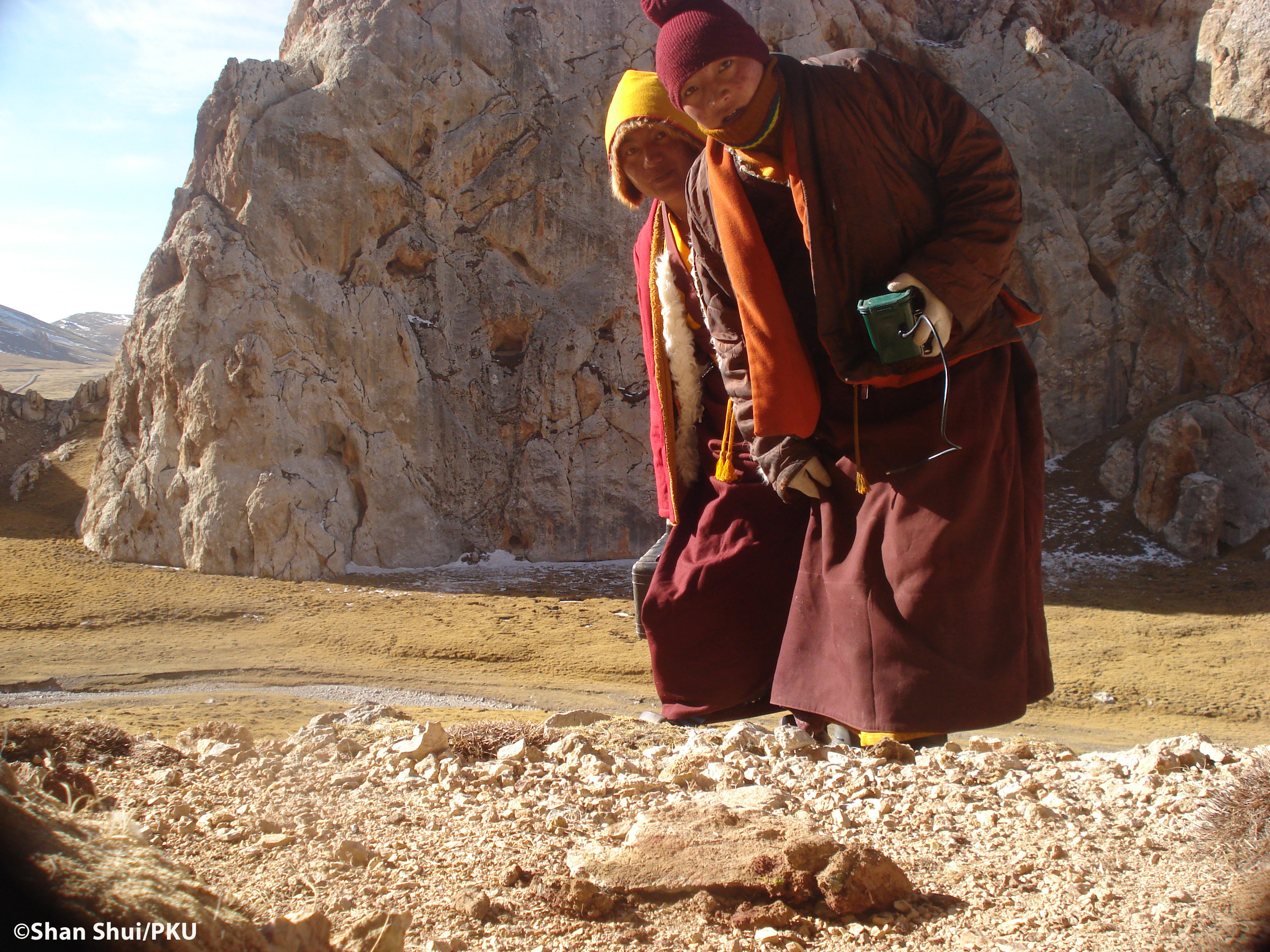
Monks test camera traps set on the Tibetan Plateau to monitor snow leopard populations. (photo: Panthera)
CURWOOD: How do local people respond to the monks?
MCCARTHY: Very positively, in the cases that we’ve seen. Now, going back to one of the threats that we had with snow leopards which is loss of livestock due to depredation by the cats - the monks recognize this as well. In fact, a couple of years ago, there was an instance where three snow leopards - a female and her two nearly grown offspring - came into the village and killed several livestock, and the villagers killed all three snow leopards.
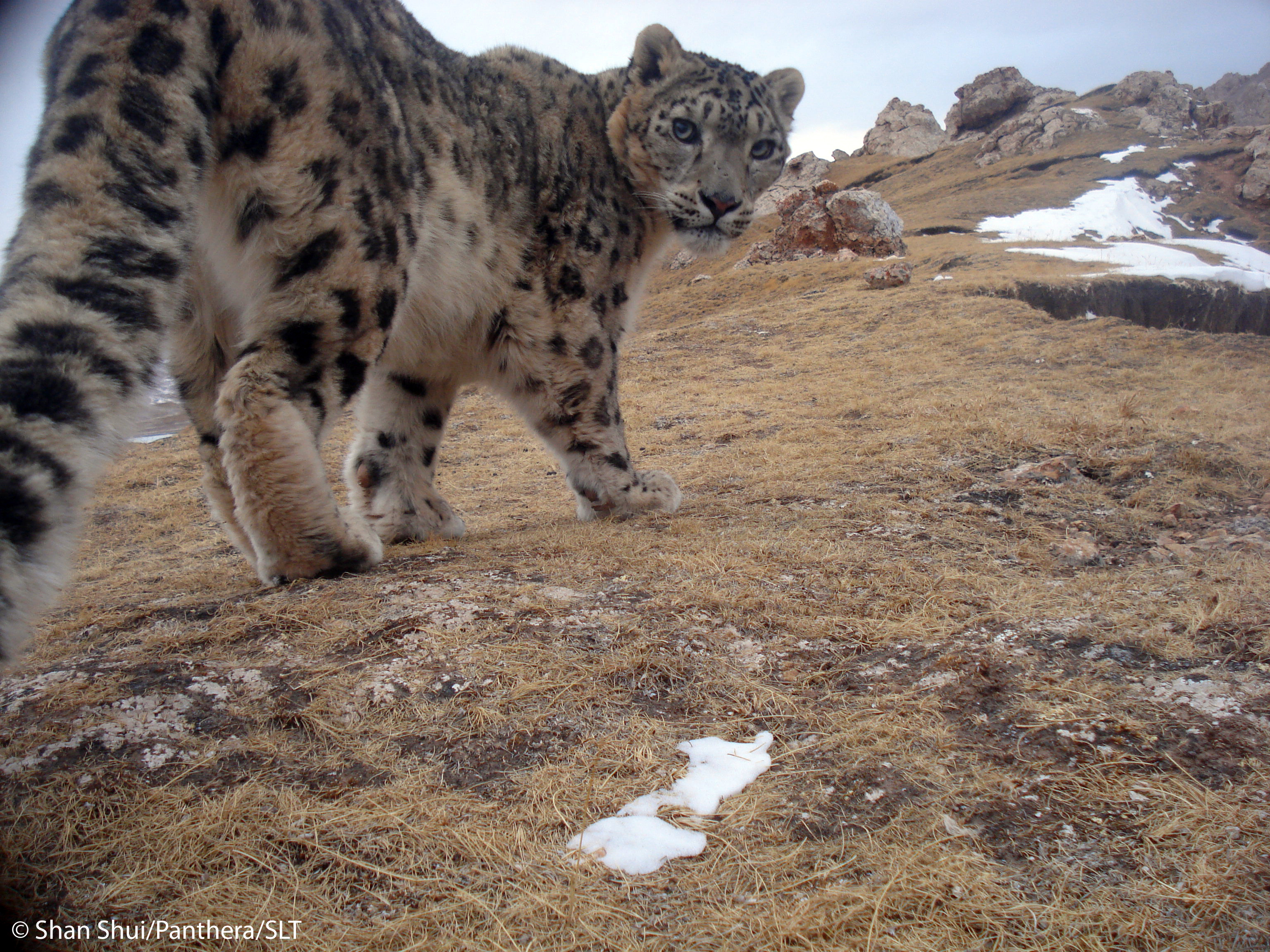
Camera trap photo of a snow leopard on the Tibetan plateau (photo: Panthera)
Well, recognizing that that was a natural thing for them to do because of the great economic loss, they helped by instituting a livestock insurance program where the monks put their own money and effort in to create this program. Now the individual herders can insure their yaks for just a few pennies each, and if any of them are killed by a snow leopard, then they’re compensated for that out of the insurance proceeds. So the monks have helped in a number of ways. They help by enforcing, they help by preaching their religion and their love for all life, and they help by setting up these economic programs that help people when they are impacted by snow leopards.
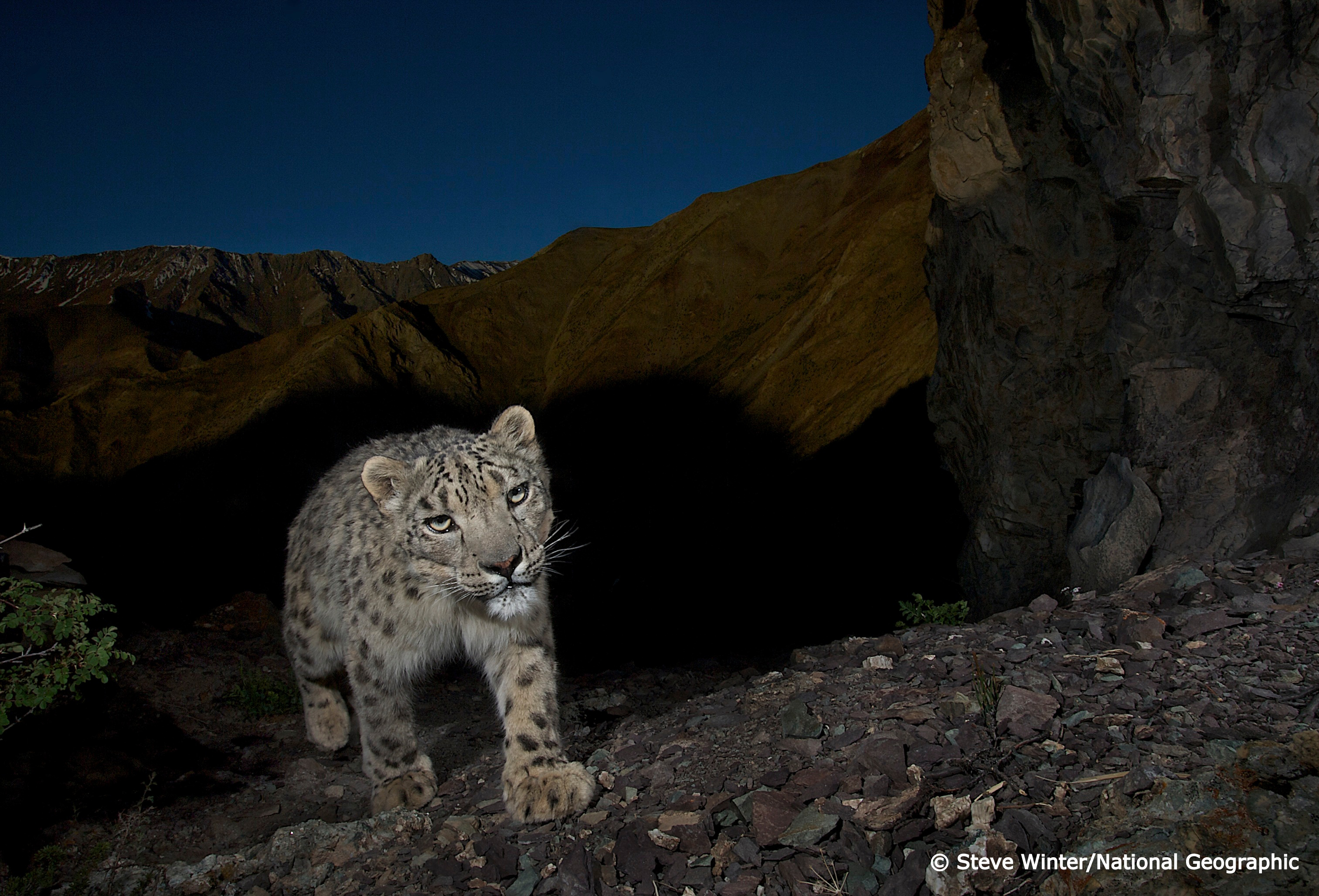
Snow Leopard (photo: Steve Winter)
CURWOOD: A Buddhist insurance company, huh?
MCCARTHY: Yes, exactly.
CURWOOD: How much is this effort helping to save the endangered snow leopard do you think?
MCCARTHY: Well, we know within the villages where we currently have the livestock insurance program, there have been no snow leopards killed in the last two to three years. And we know as we expand that, and we have plans to really expand that over the next couple of years, that we should see the same types of results.
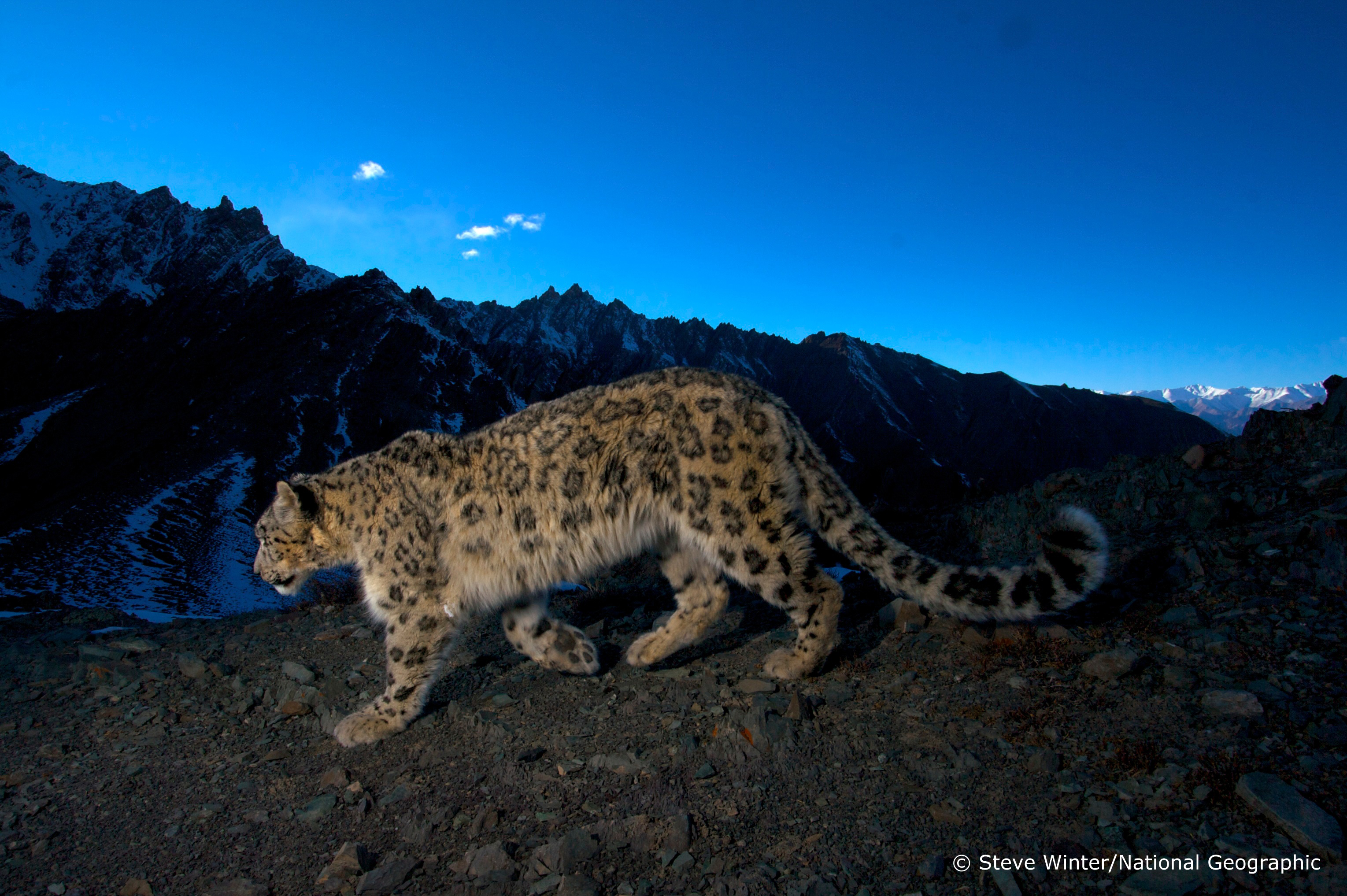
Snow Leopard (photo: Steve Winter)
This is very early in the process, so we’re positive the outcomes will be great. We can’t point to anything more at this point besides positive movement in attitudes of the local people. And I think that’s really brought out by these festivals they have each year, and a few years ago, one of those was attracting 10,000 to 12,000 people, and now it’s attracting up to 50,000 people a year where the senior monks get everyone there to pledge to save snow leopards for the rest of the lives. That’s big. That’s bigger than anything I could do with any type of conservation program that I’m aware of.
Buddhism is practiced across a huge percentage of snow leopard range, and so that means we’ve got an awfully big potential for expanding this program to other places, and we would have these natural partners in snow leopard conservation, impacting a very large percentage of the snow leopard population for us.
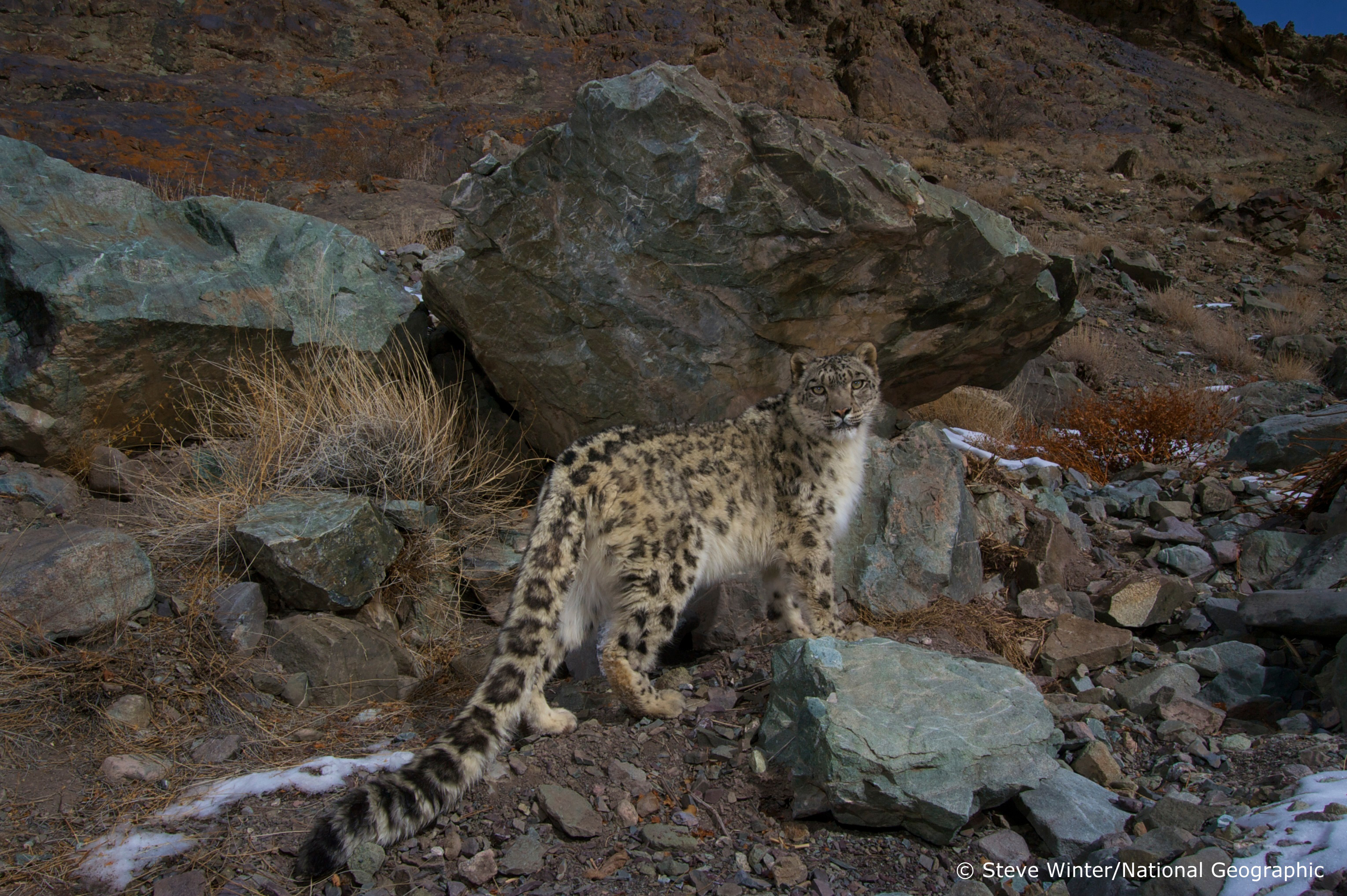
Snow Leopard (photo: Steve Winter)
CURWOOD: By the way, Tom, typically western environmental activists don’t use religion as a tool for conservation. What lessons might they be able to learn from your experience?
MCCARTHY: Well, I think this is a good example of when you link the positive attitudes that various religions have for nature with good sound science that you could come up with conservation programs that have a very substantial impact, and you’re right, I don’t think here in the west we always take advantage of that, and I’m certainly not a student of religions, but to the extent that I know it many of them have strong teachings about the value of nature, and I just don’t think that in most cases we’ve melded the science and the conservation and the religious ethics in a way that creates positive conservation programs like what we’re seeing on the Tibetan Plateau.
CURWOOD: Tom McCarthy is the Executive Director of Panthera. Thank you so much.
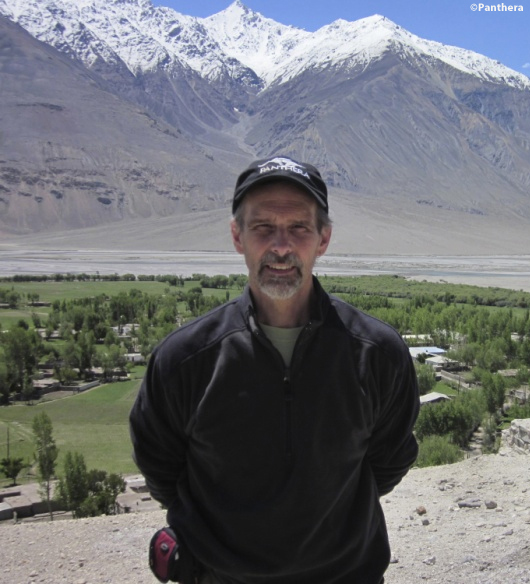
Tom McCarthy (photo: Panthera)
MCCARTHY: You bet. Thank you very much for having me.
Related links:
- Read the report about Panthera’s Snow Leopard program
- Panthera’s website
- Tom McCarthy’s website
[MUSIC: Nguyen Le, “Snow On A Flower” from Walking On The Tiger’s Tail (ACT Music 2005)]
CURWOOD: Next week on Living on Earth...there's gold and copper in them thar hills of Alaska, and high stakes for the proposed Pebble Mine.
MASON: It's so large with such a large amount of money there and located in such a pristine environment that's why it has galvanized people on all sides, both the proponents and opponents.
CURWOOD: The riches of salmon and the wilderness versus the riches of mining - -- that's next time on Living on Earth.
CURWOOD: Living on Earth is produced by the World Media Foundation. Naomi Arenberg, Bobby Bascomb, Emmett Fitzgerald, Andrew Keys, Helen Palmer, Adelaide Chen, James Curwood, Jennifer Marquis and Gabriela Romanow all help to make our show. And we're happy to welcome Kathryn Rodway, our new intern, this week. Jeff Turton is our technical director. Alison Lirish Dean composed our themes. You can find us anytime at LOE.org, and like us on our Facebook page - it’s PRI’s Living on Earth. And we tweet from @LivingOnEarth. I'm Steve Curwood. Thanks for listening.
ANNOUNCER 1: Funding for Living on Earth comes from the Grantham Foundation for the protection of the environment, supporting strategic communications and collaboration in solving the world’s most pressing environmental problems. The Kendeda Fund, furthering the values that contribute to a healthy planet, and Gilman Ordway for coverage of conservation and environmental change. Living on Earth is also supported by a friend of The Nation, where you can read such environmental writers as Wen Stevenson, Bill McKibben, Mark Hertzgaard, and others at TheNation.com. This is PRI, Public Radio International.
ANNOUNCER 2: PRI, Public Radio International.
Living on Earth wants to hear from you!
Living on Earth
62 Calef Highway, Suite 212
Lee, NH 03861
Telephone: 617-287-4121
E-mail: comments@loe.org
Newsletter [Click here]
Donate to Living on Earth!
Living on Earth is an independent media program and relies entirely on contributions from listeners and institutions supporting public service. Please donate now to preserve an independent environmental voice.
NewsletterLiving on Earth offers a weekly delivery of the show's rundown to your mailbox. Sign up for our newsletter today!
 Sailors For The Sea: Be the change you want to sea.
Sailors For The Sea: Be the change you want to sea.
 The Grantham Foundation for the Protection of the Environment: Committed to protecting and improving the health of the global environment.
The Grantham Foundation for the Protection of the Environment: Committed to protecting and improving the health of the global environment.
 Contribute to Living on Earth and receive, as our gift to you, an archival print of one of Mark Seth Lender's extraordinary wildlife photographs. Follow the link to see Mark's current collection of photographs.
Contribute to Living on Earth and receive, as our gift to you, an archival print of one of Mark Seth Lender's extraordinary wildlife photographs. Follow the link to see Mark's current collection of photographs.
 Buy a signed copy of Mark Seth Lender's book Smeagull the Seagull & support Living on Earth
Buy a signed copy of Mark Seth Lender's book Smeagull the Seagull & support Living on Earth

